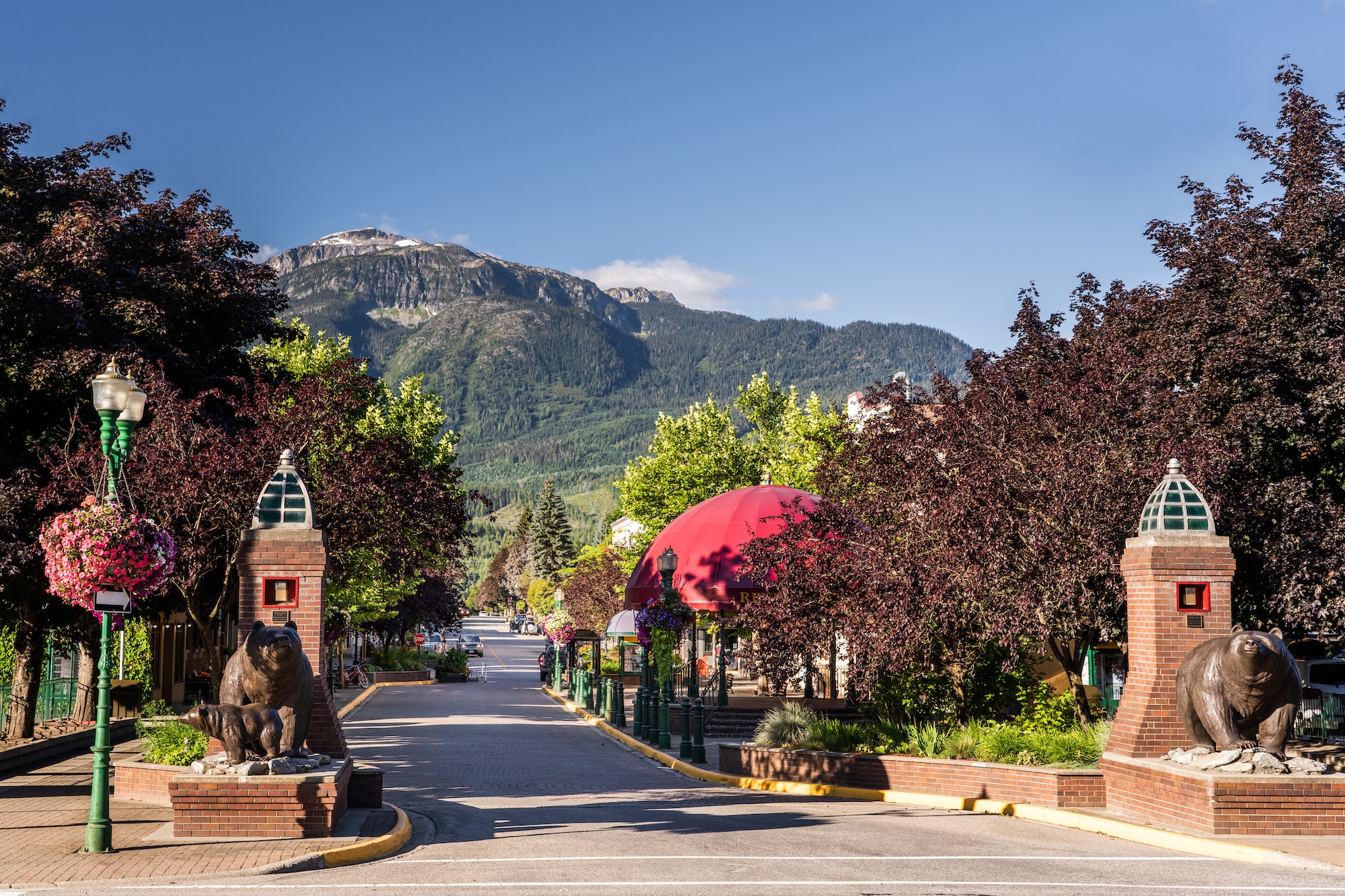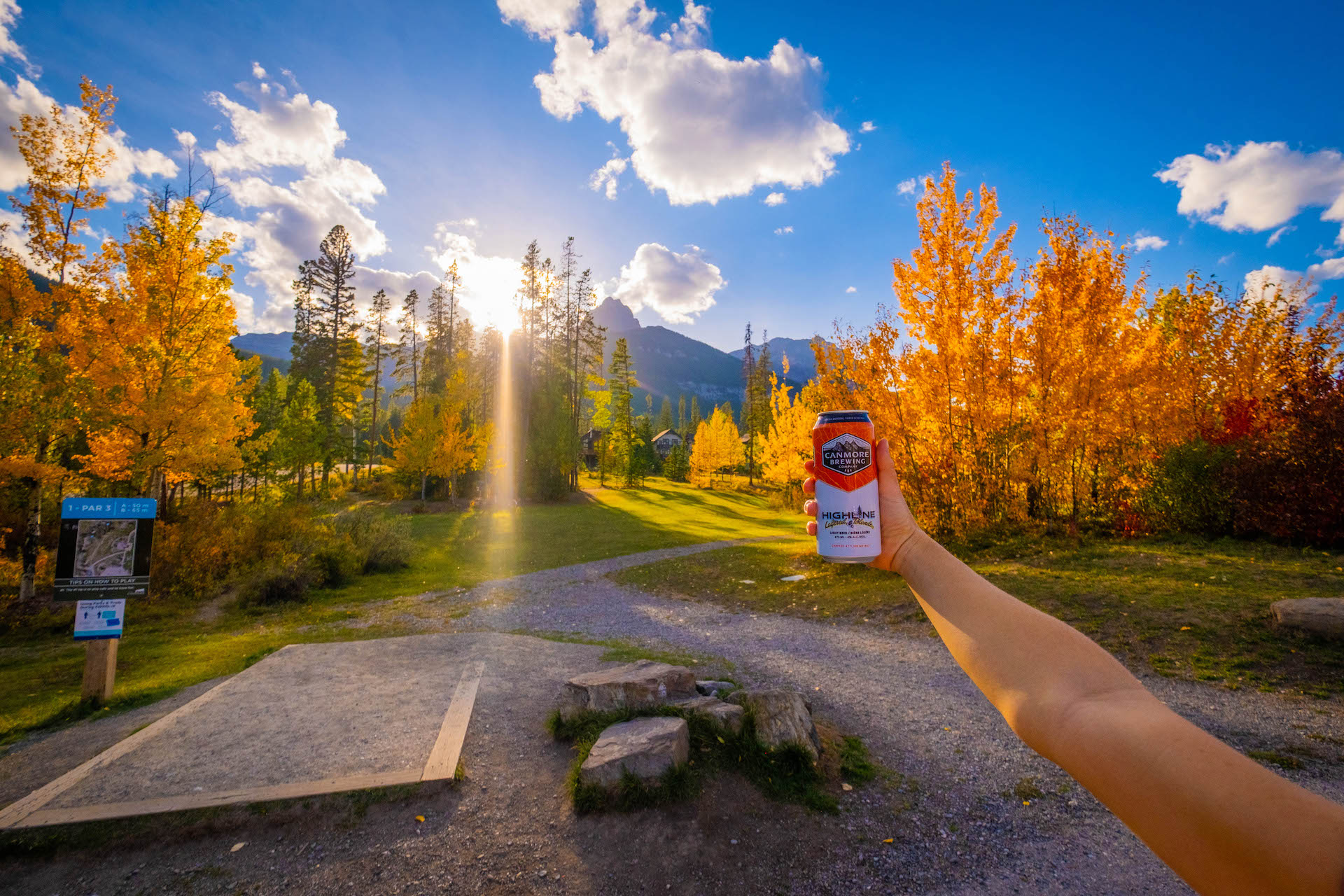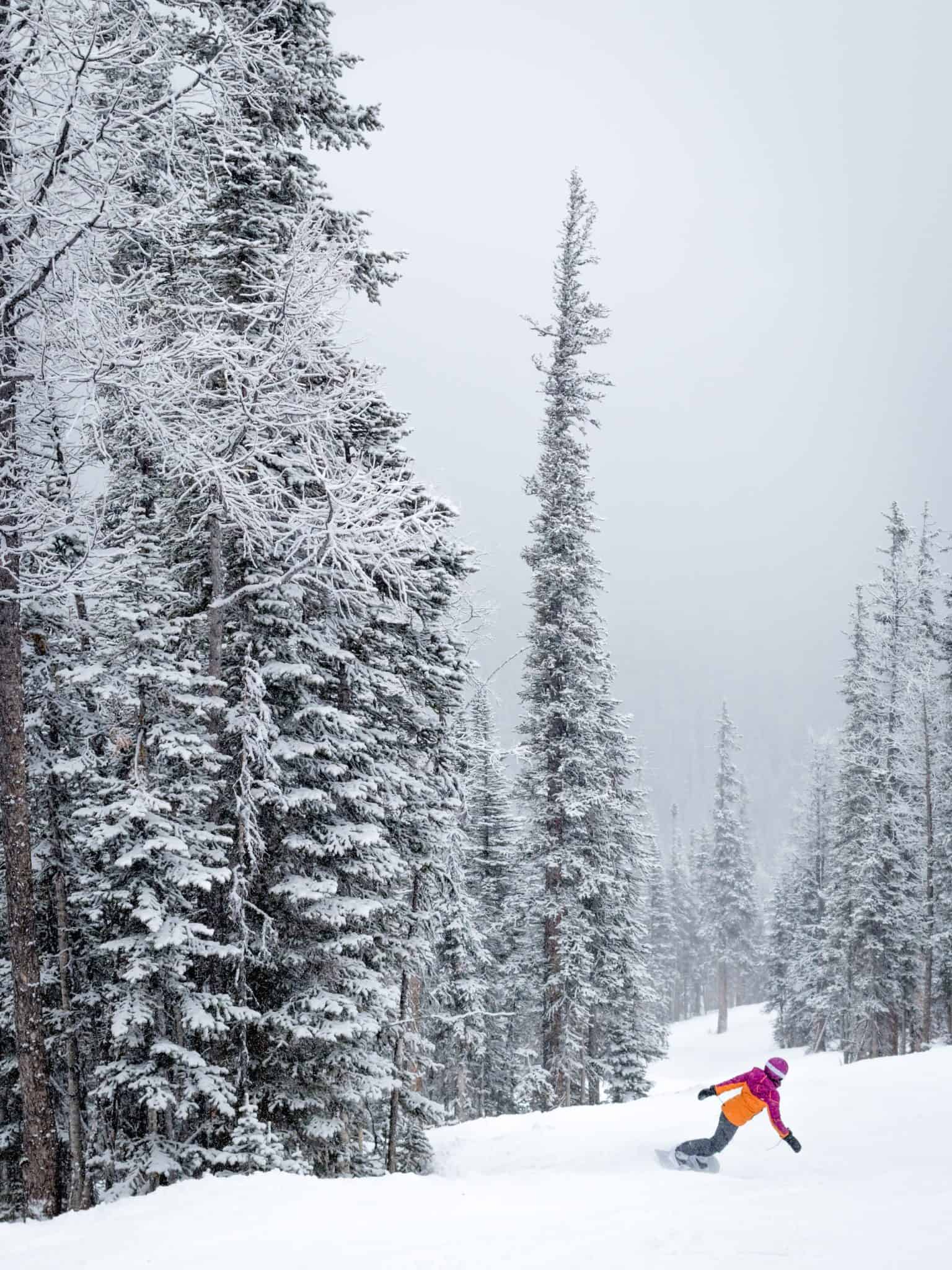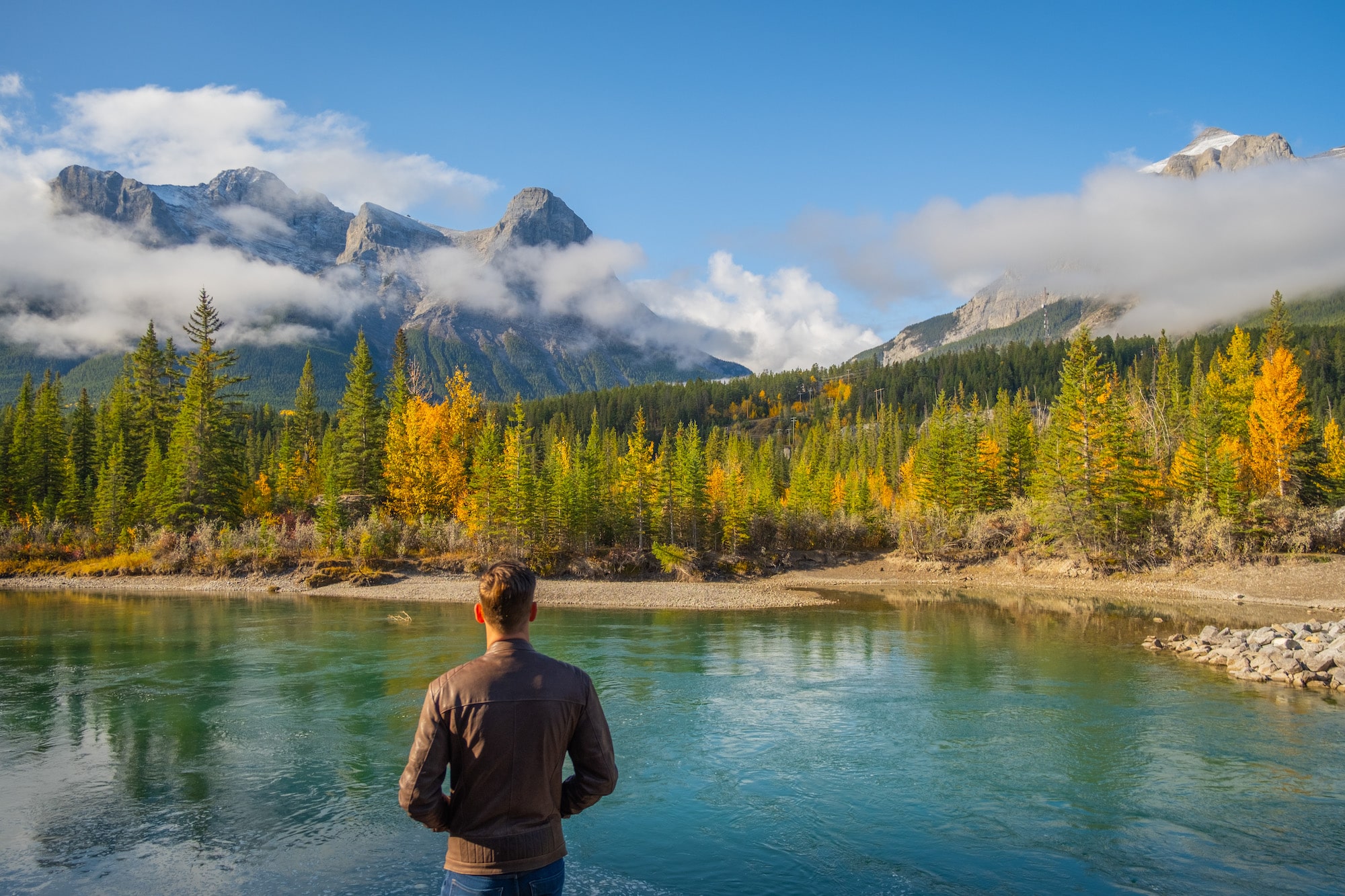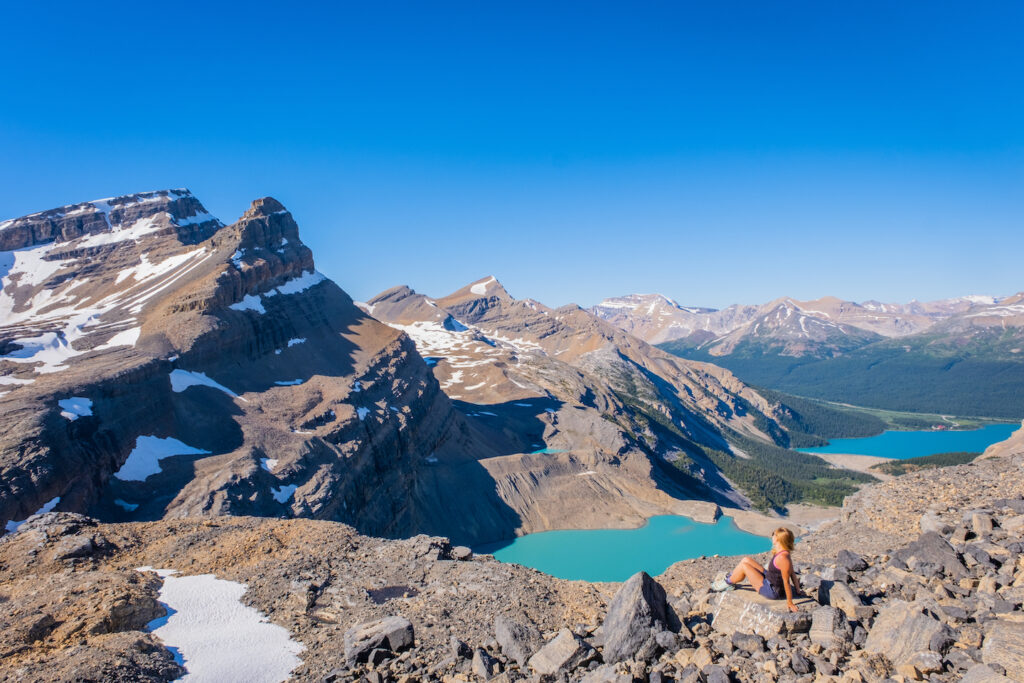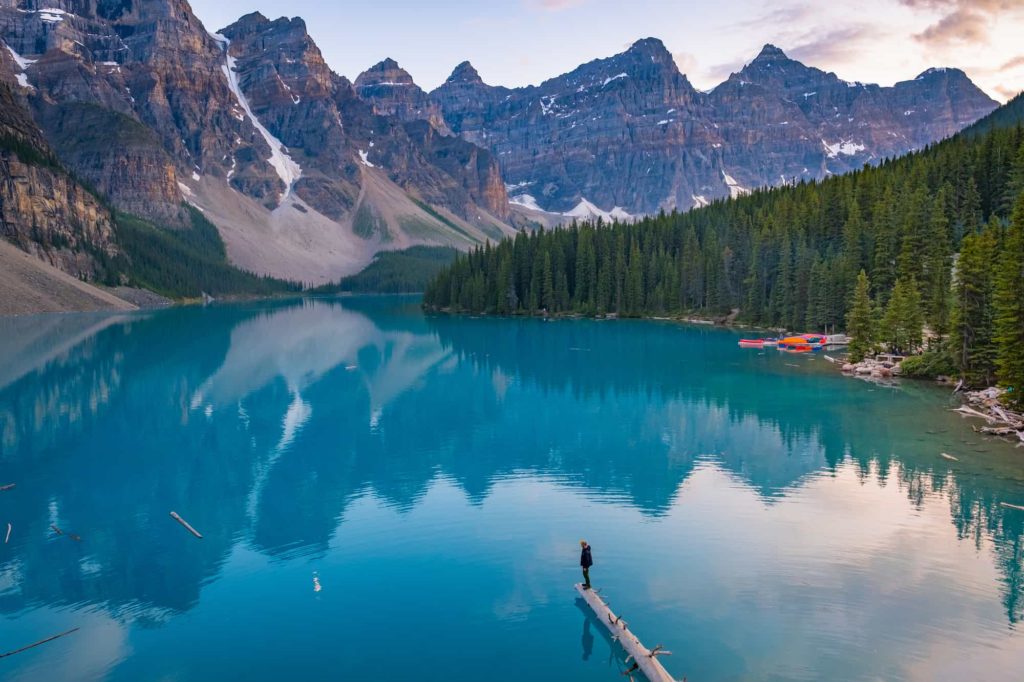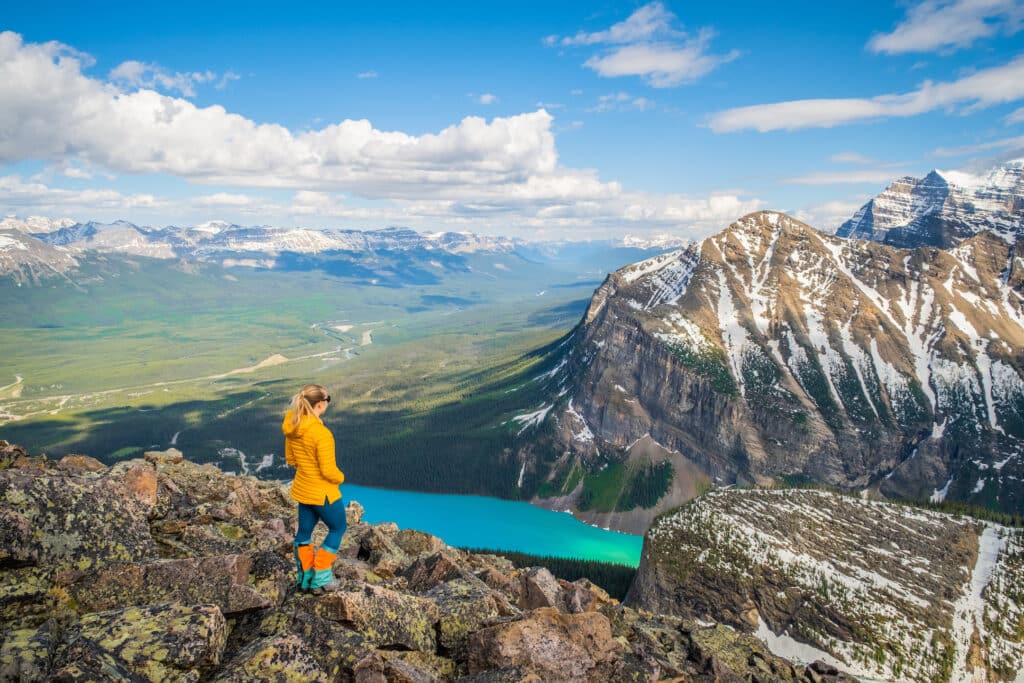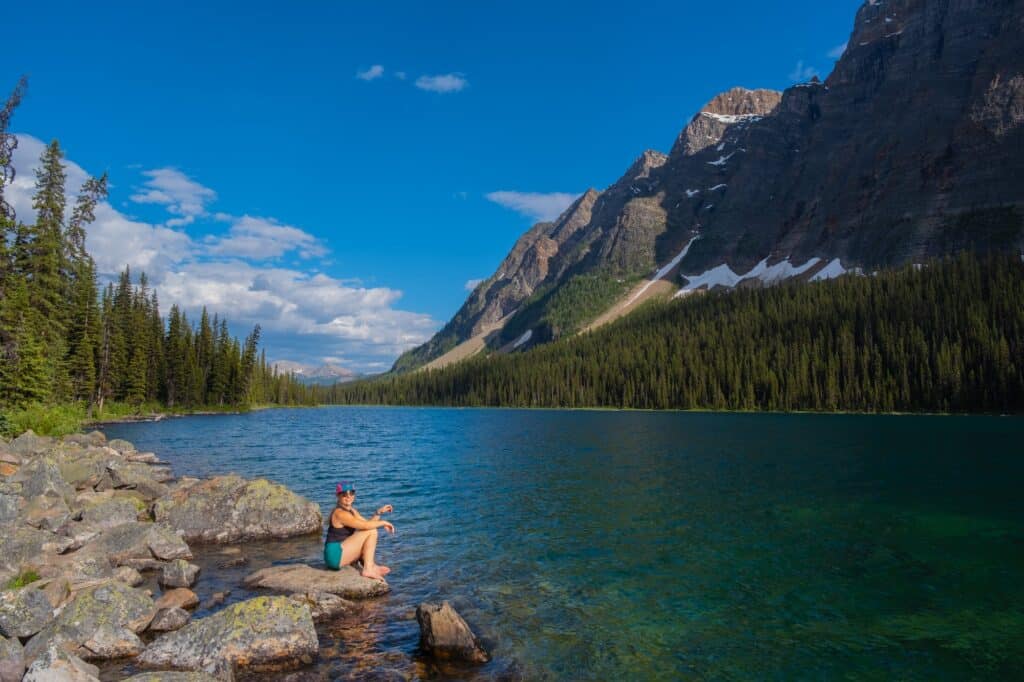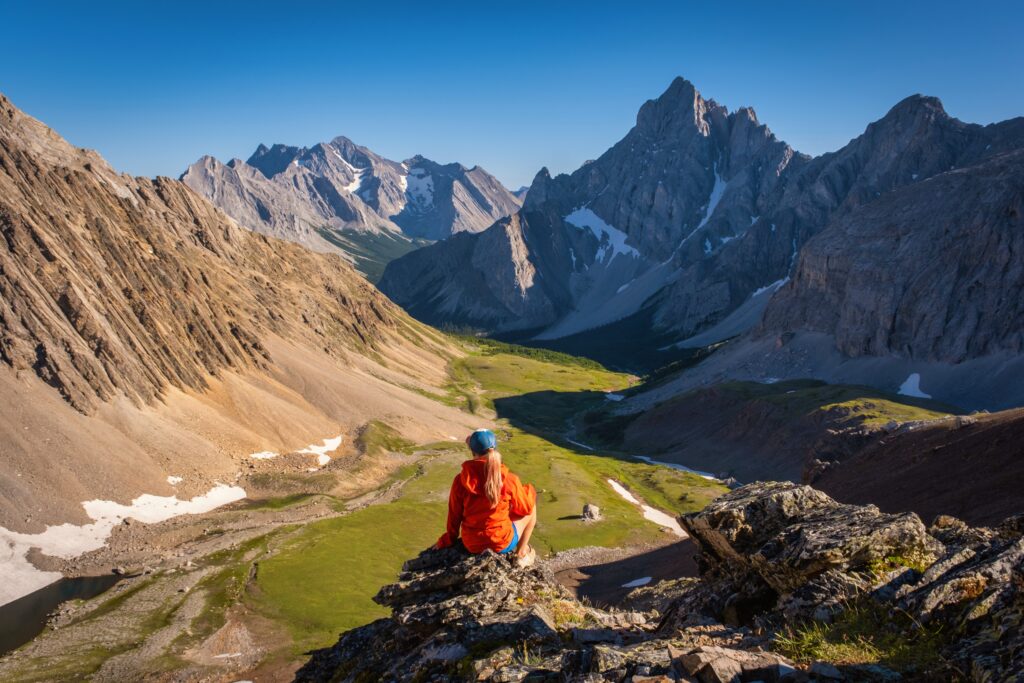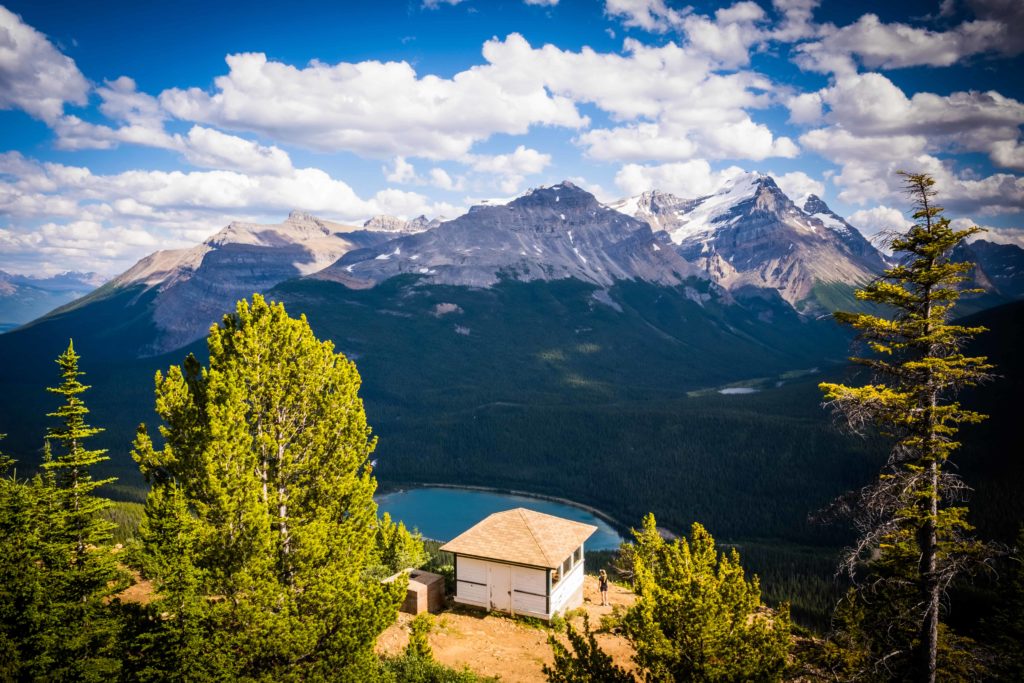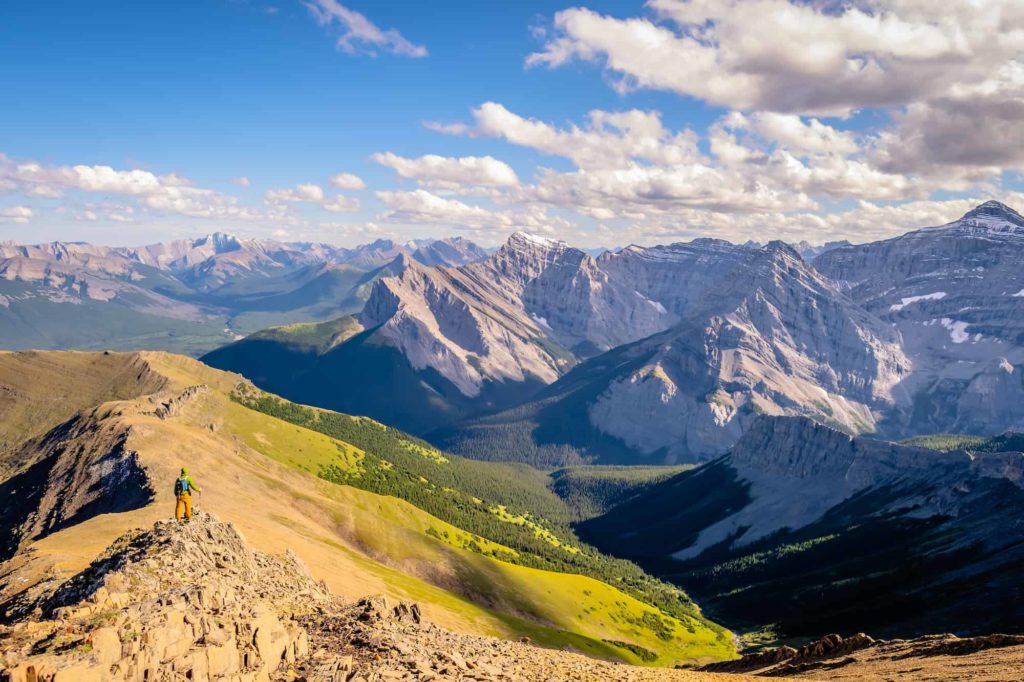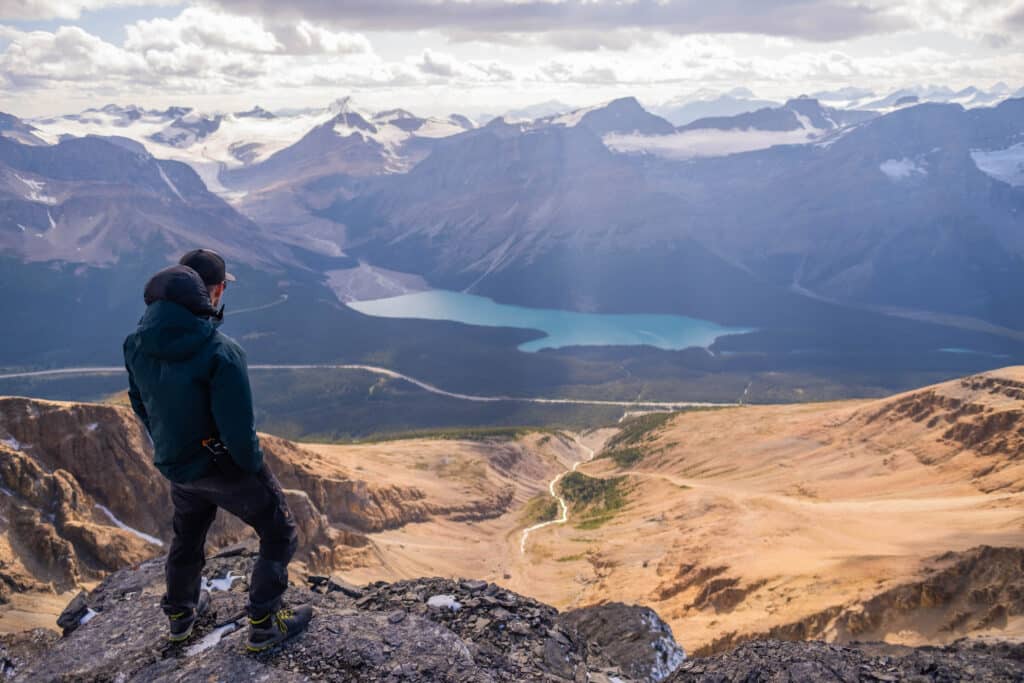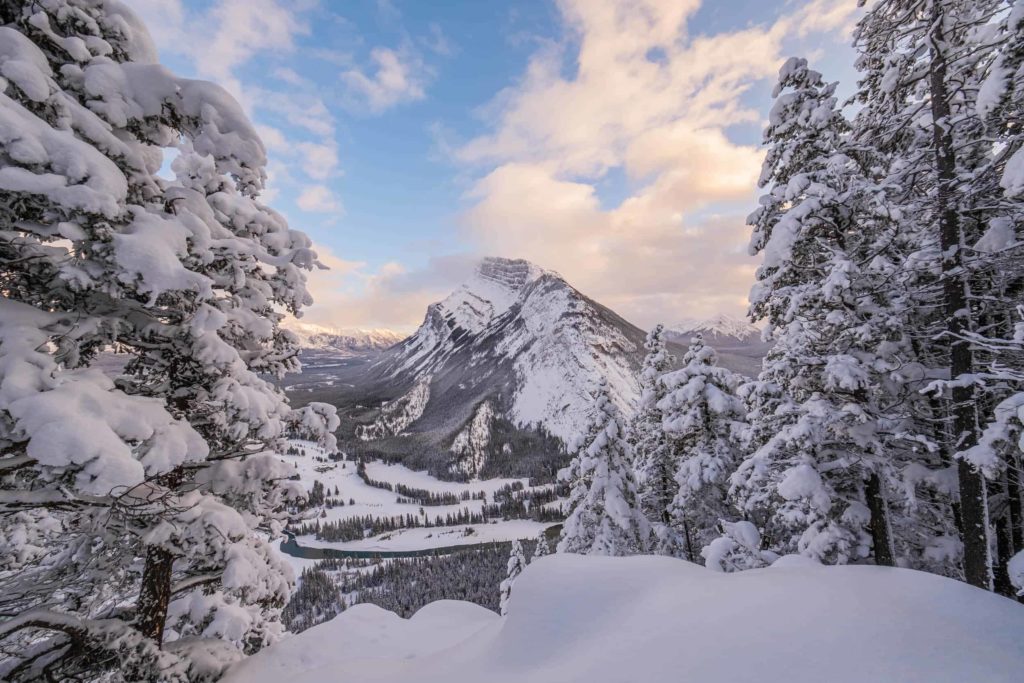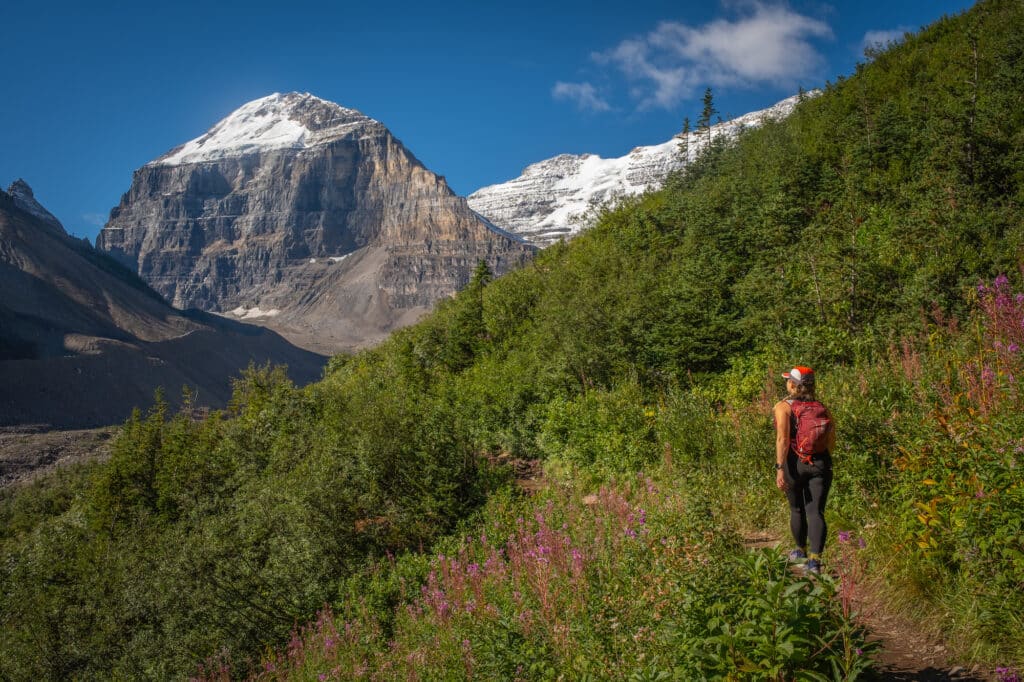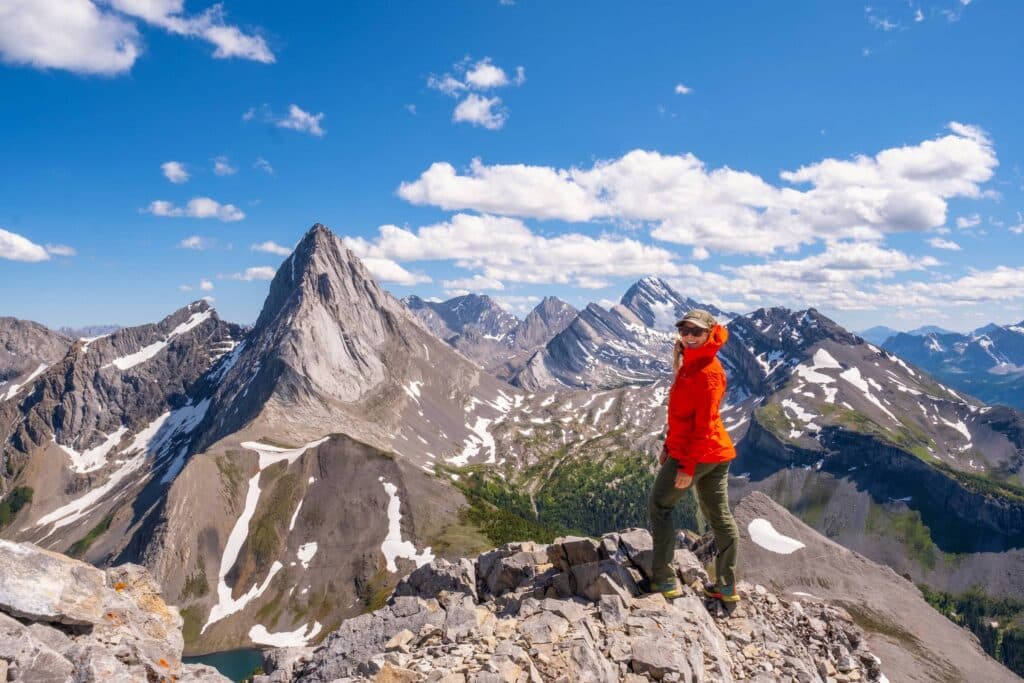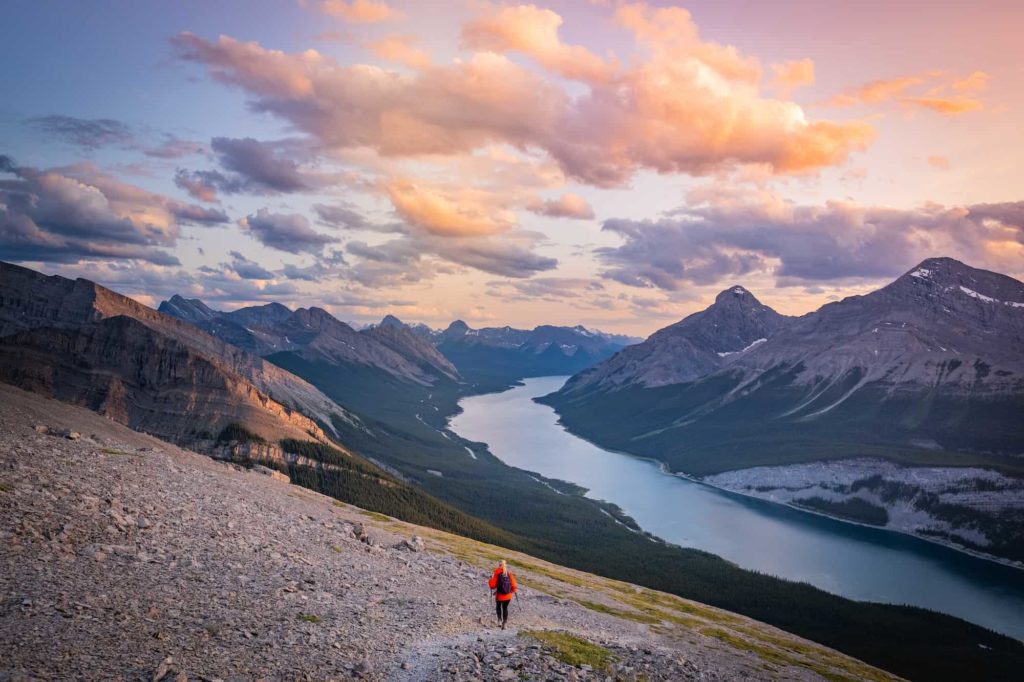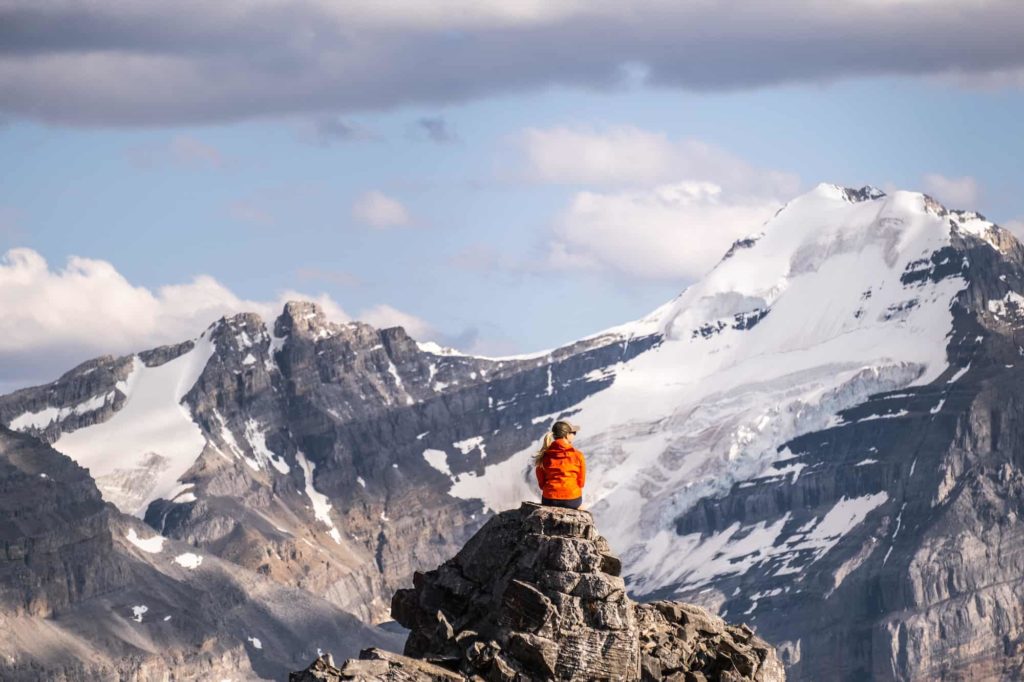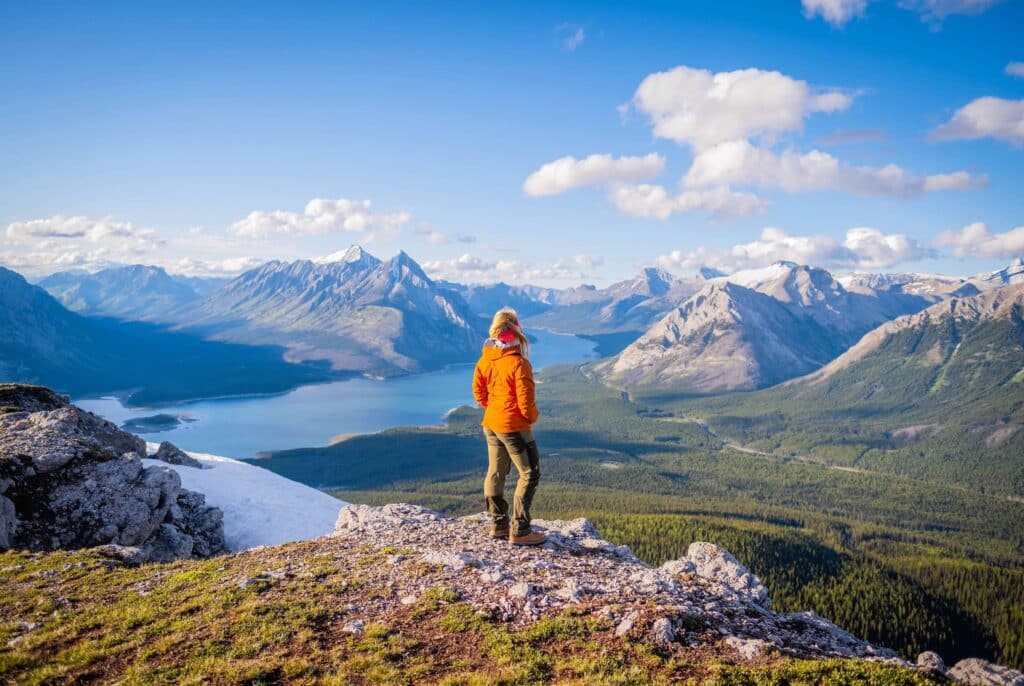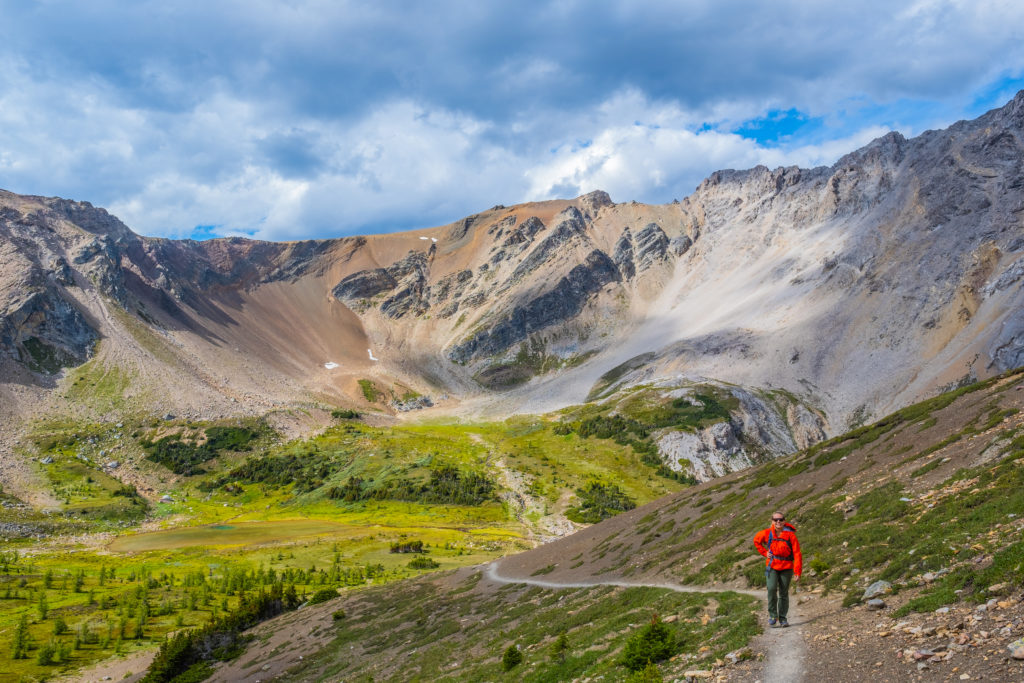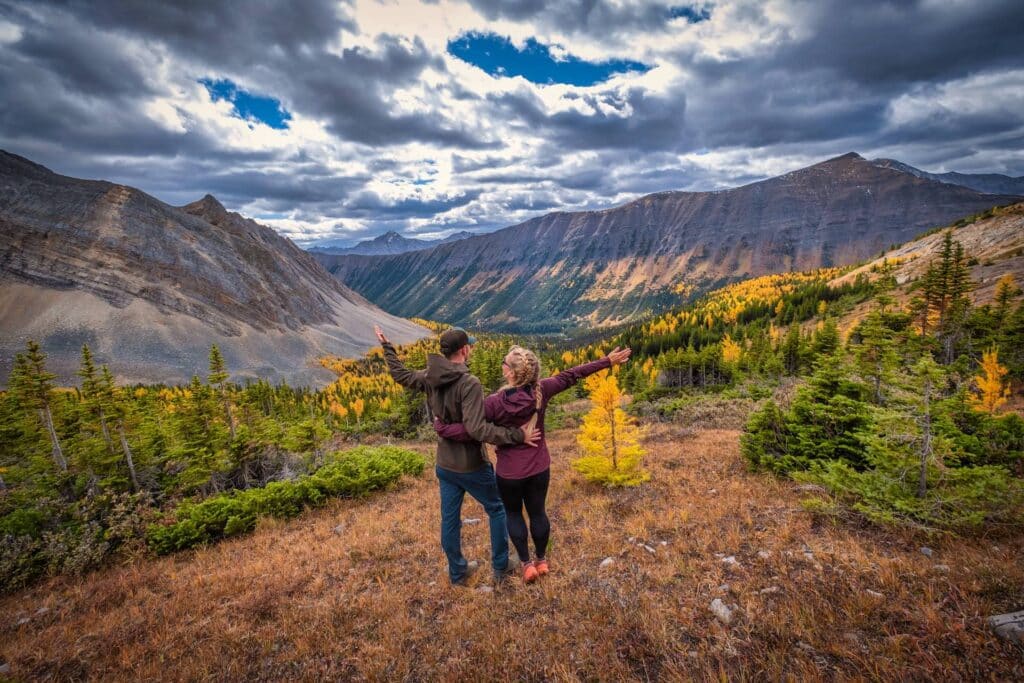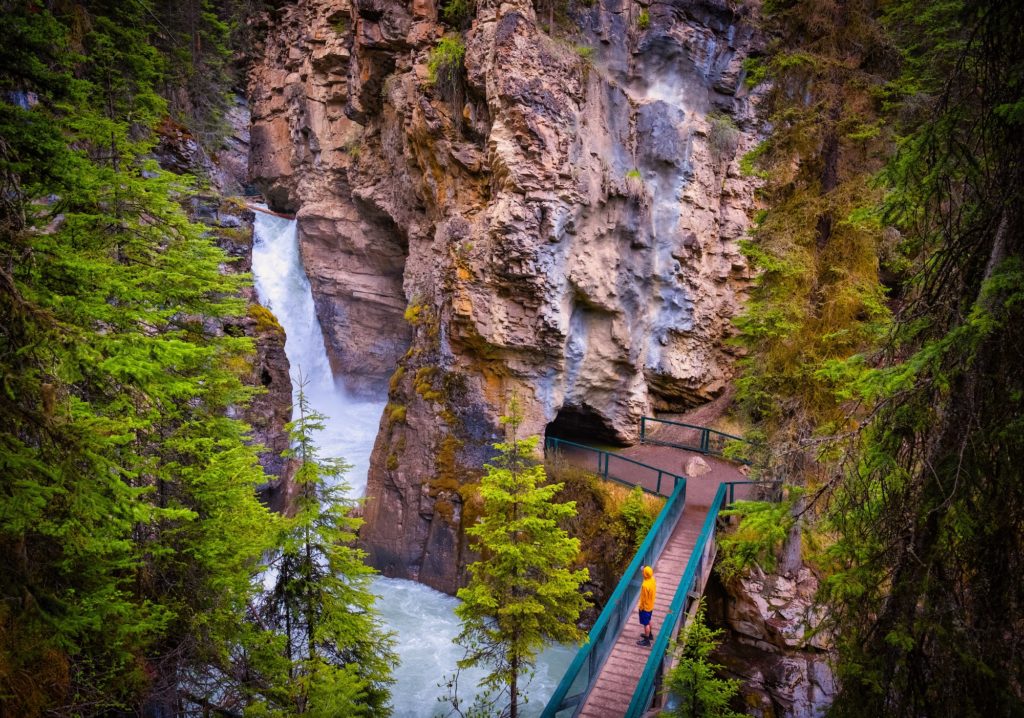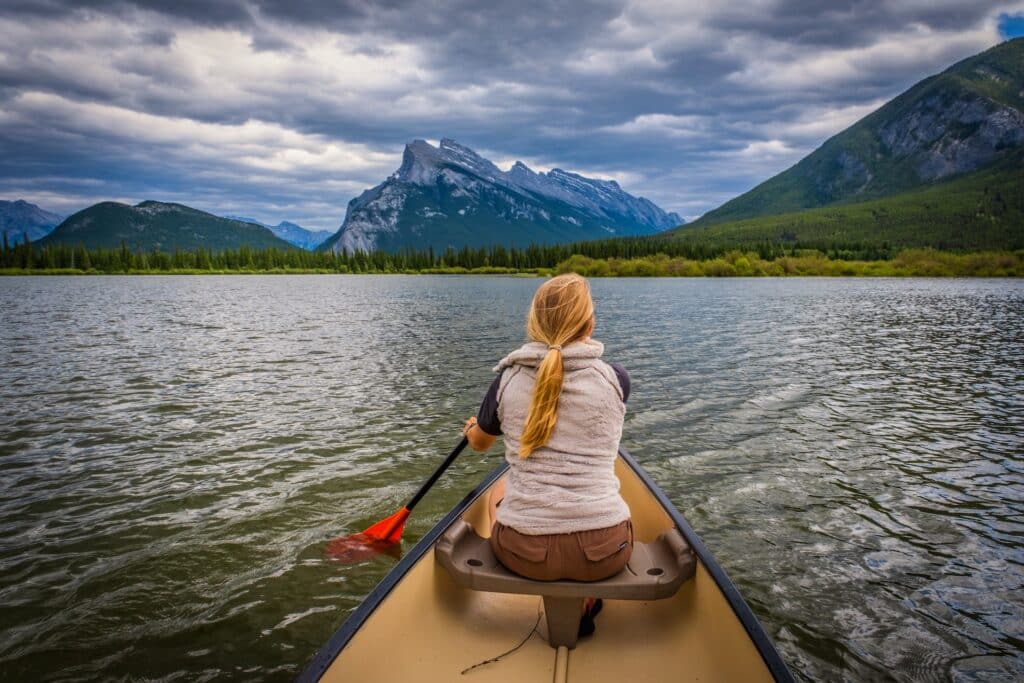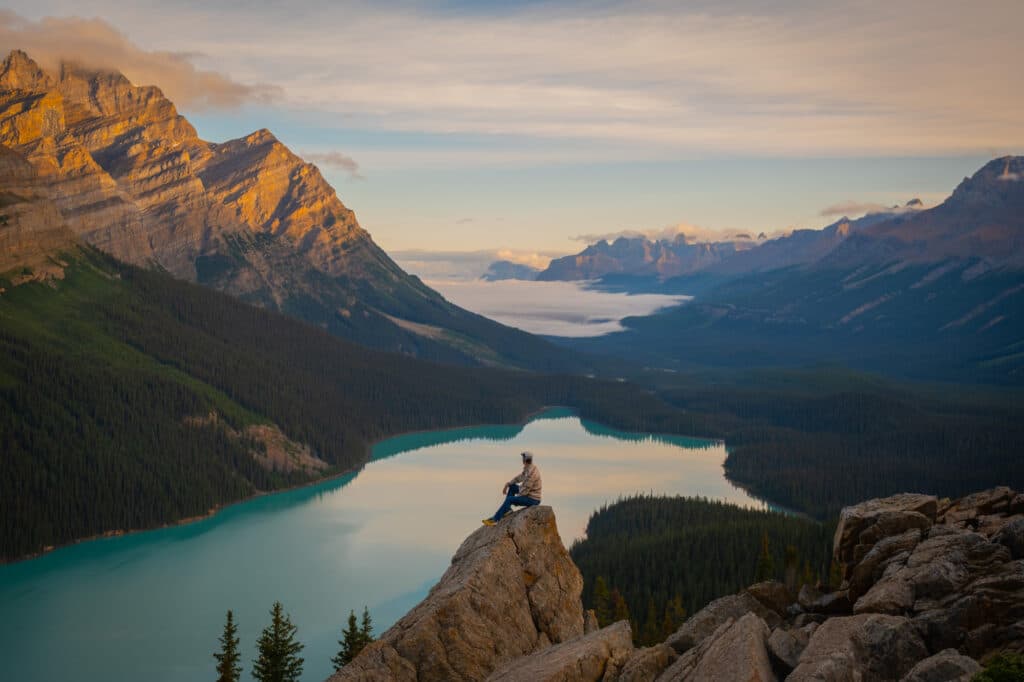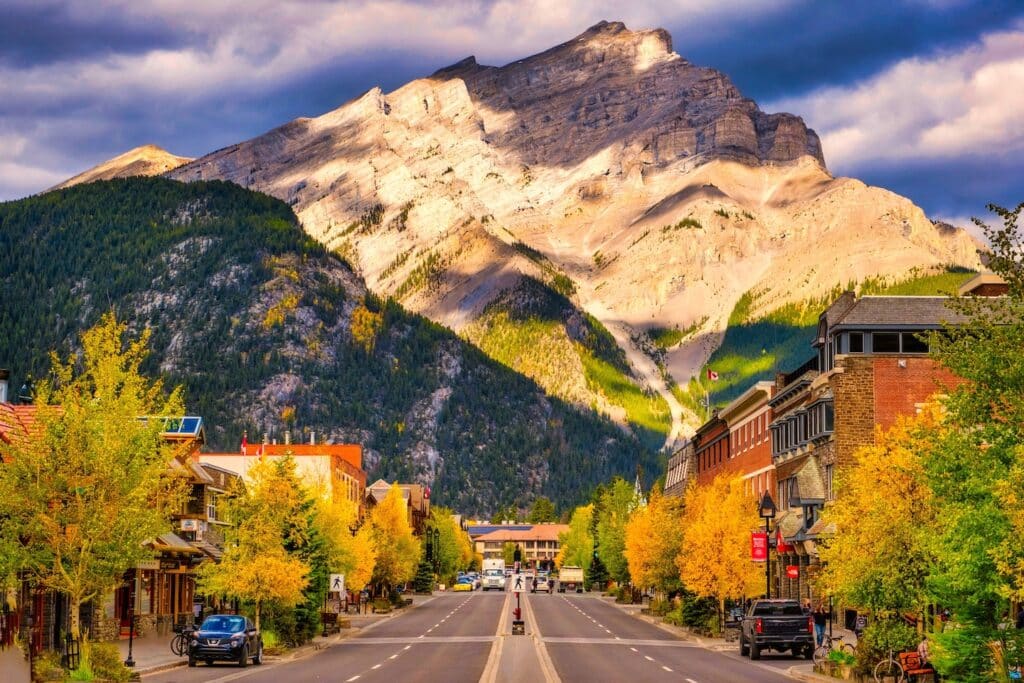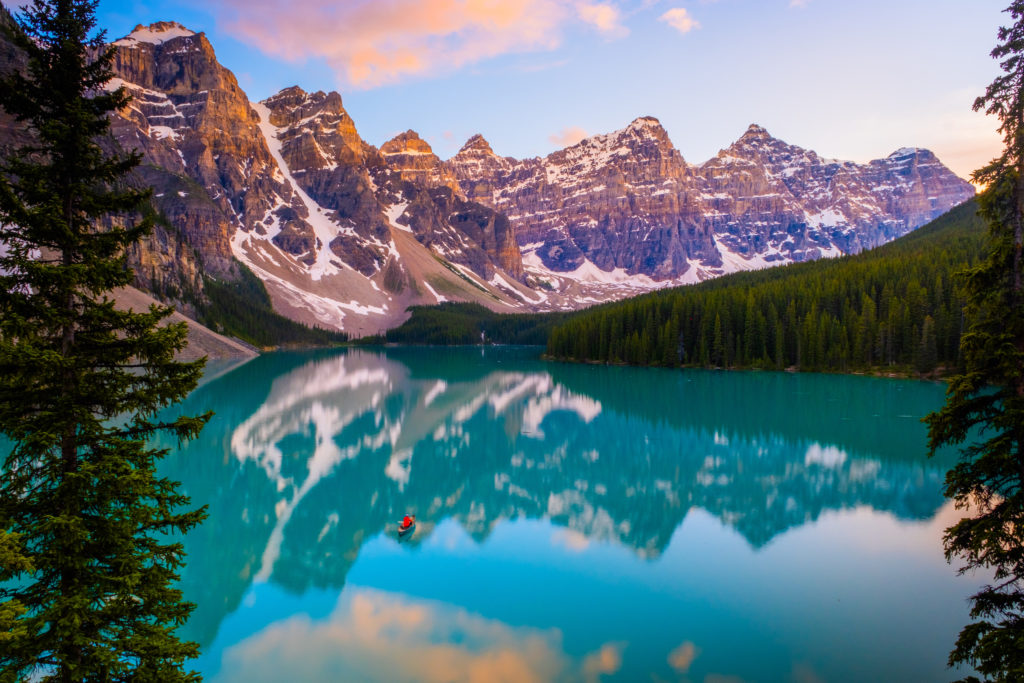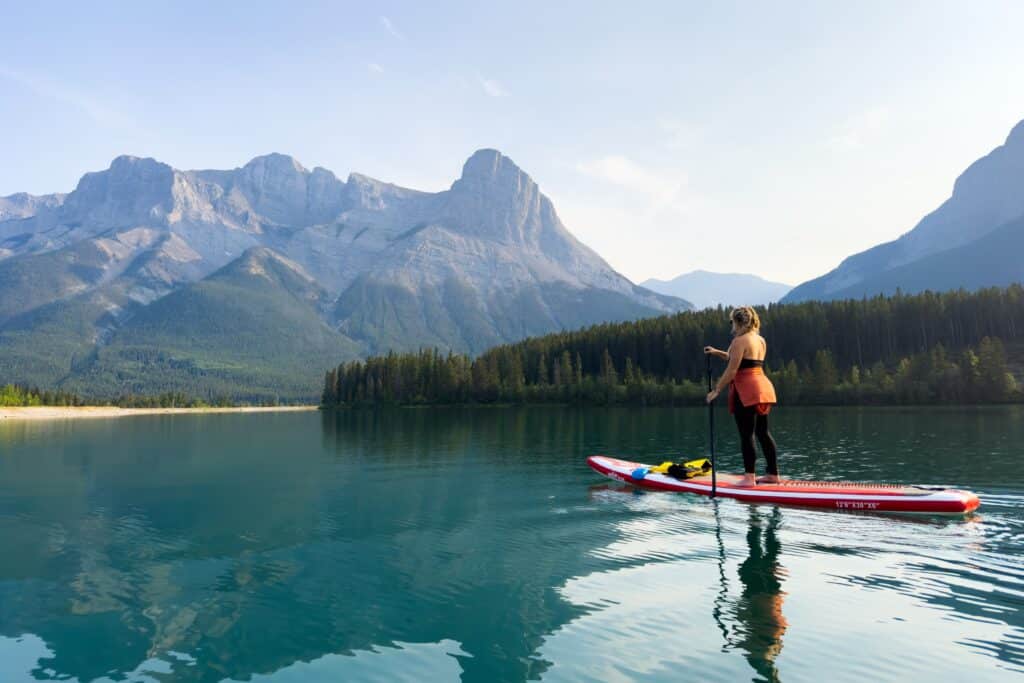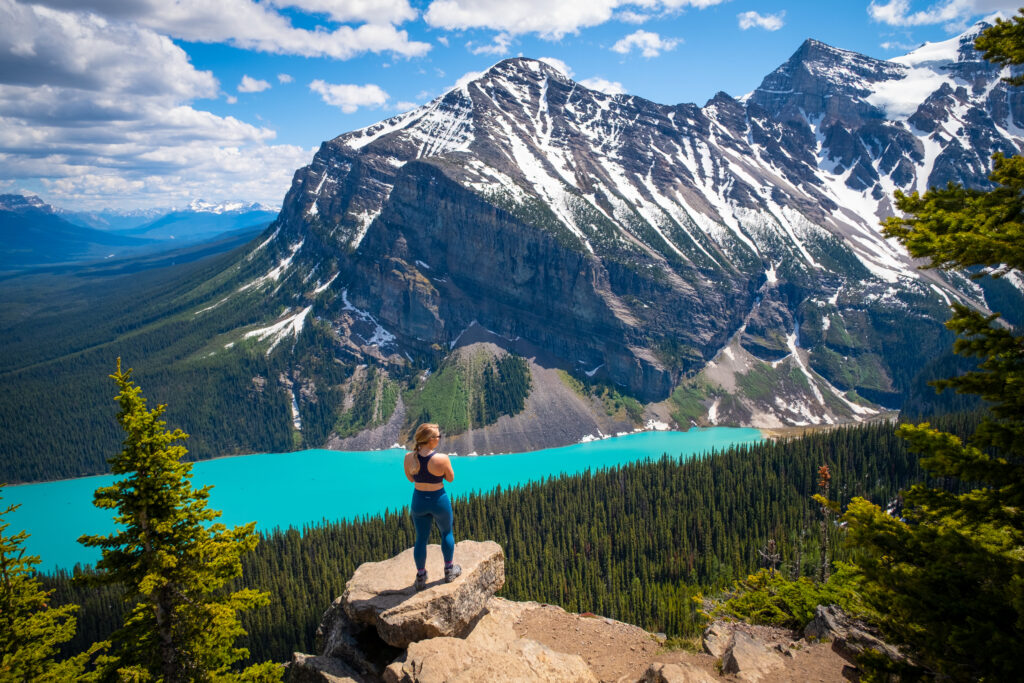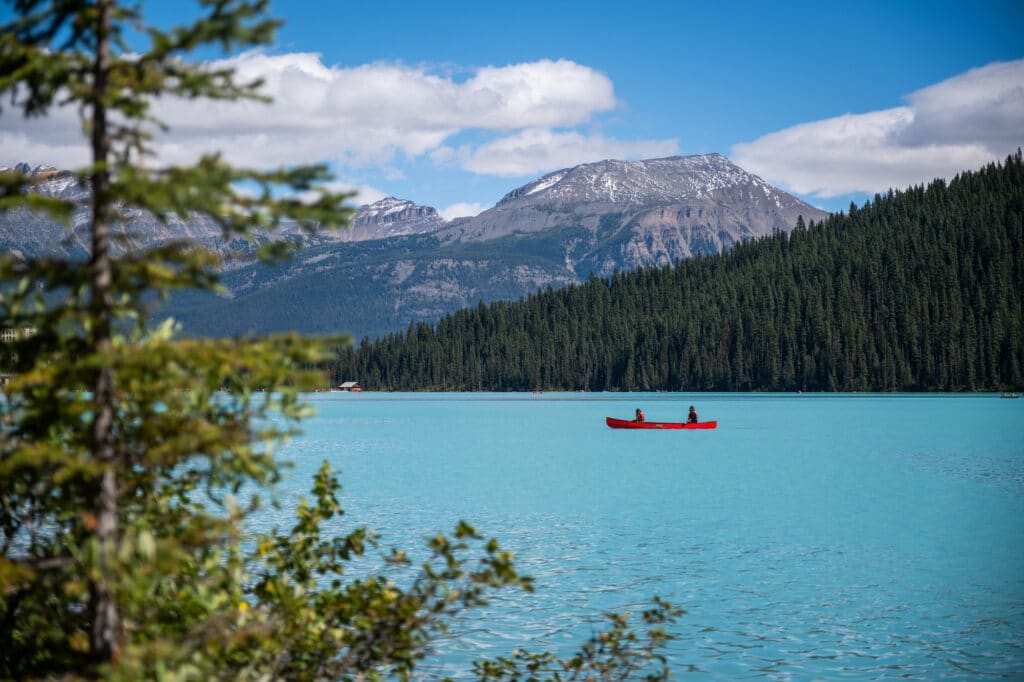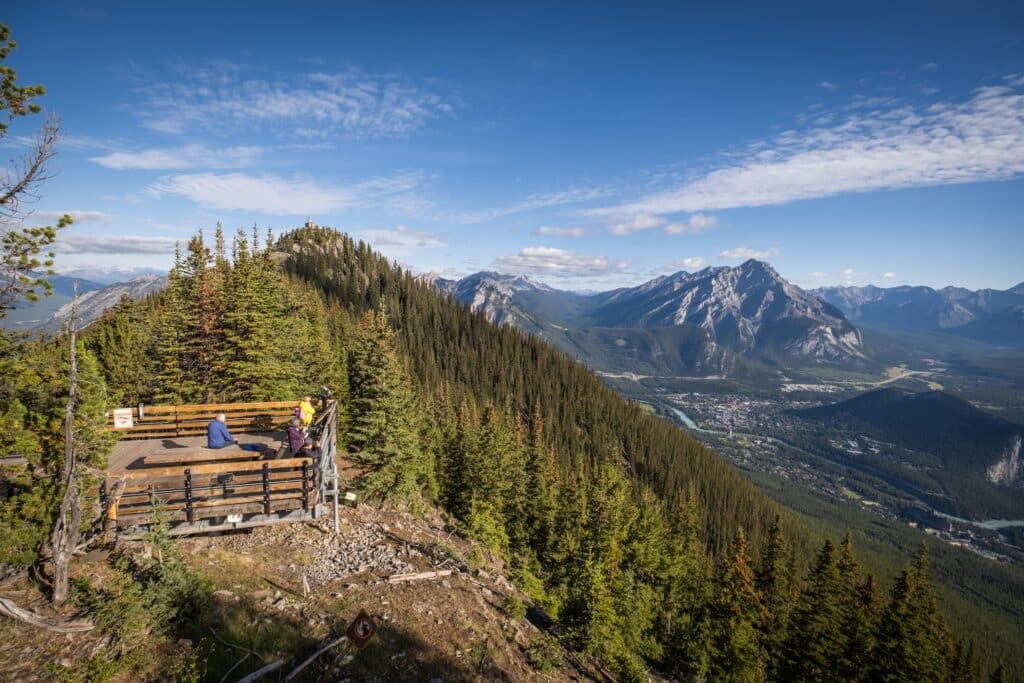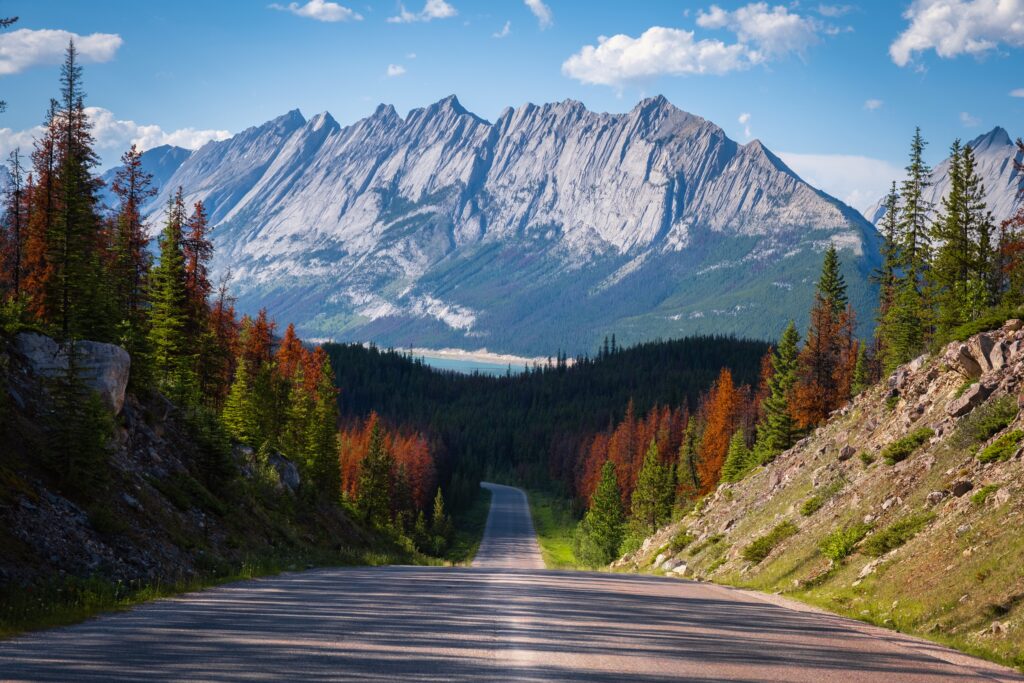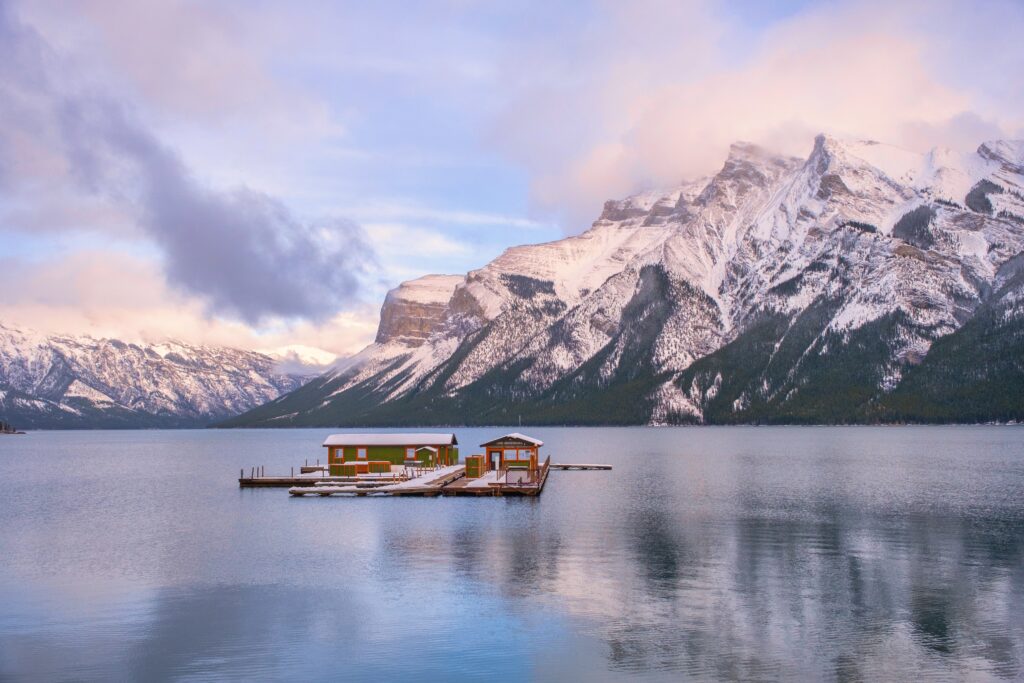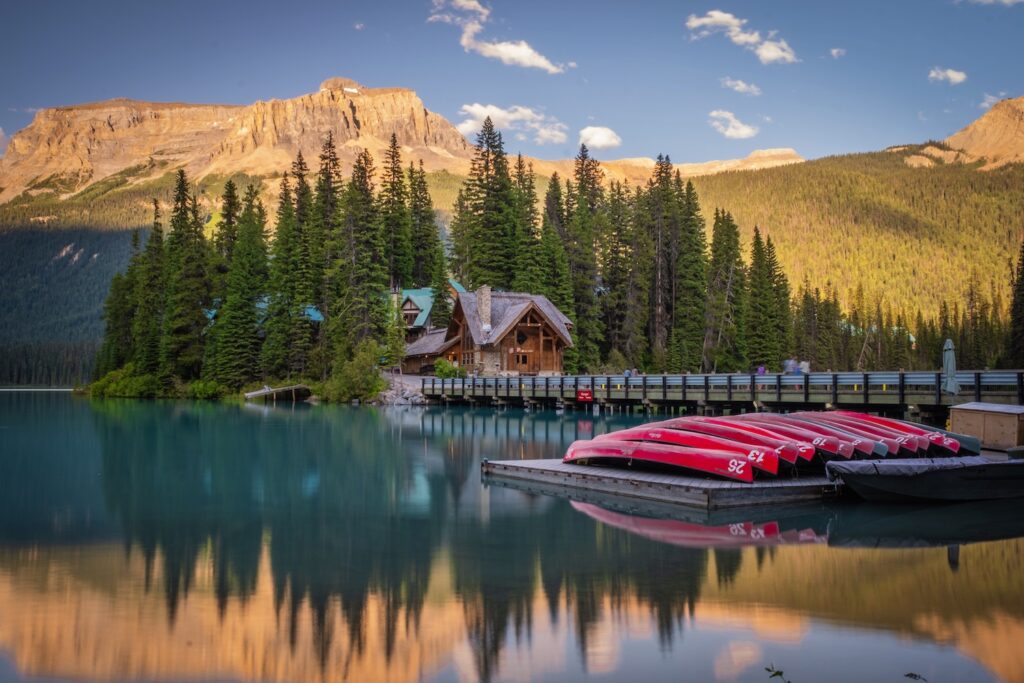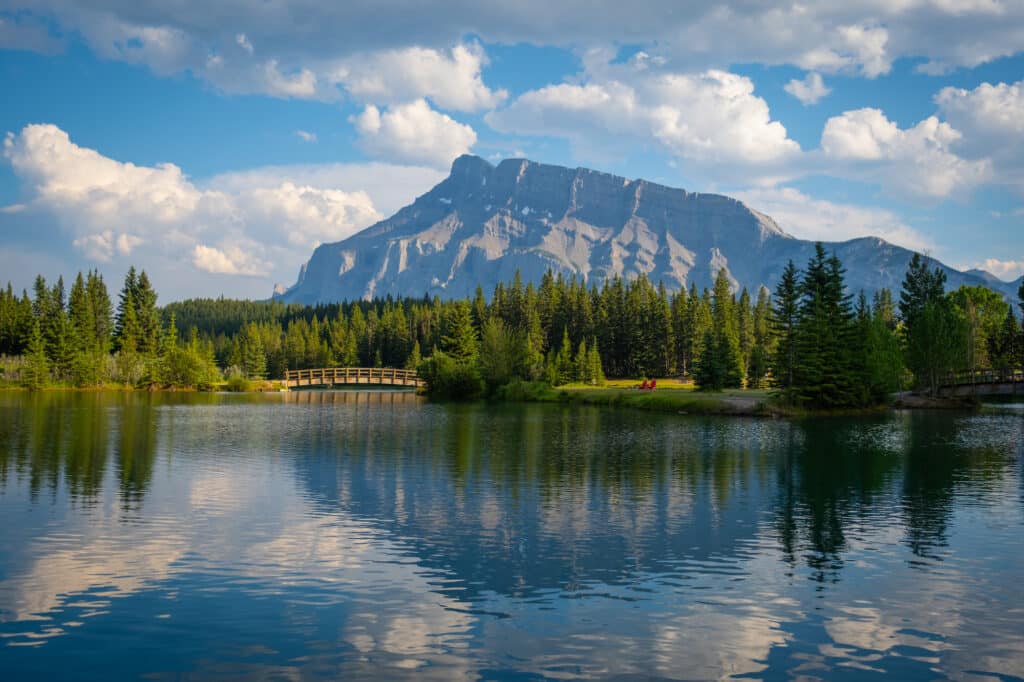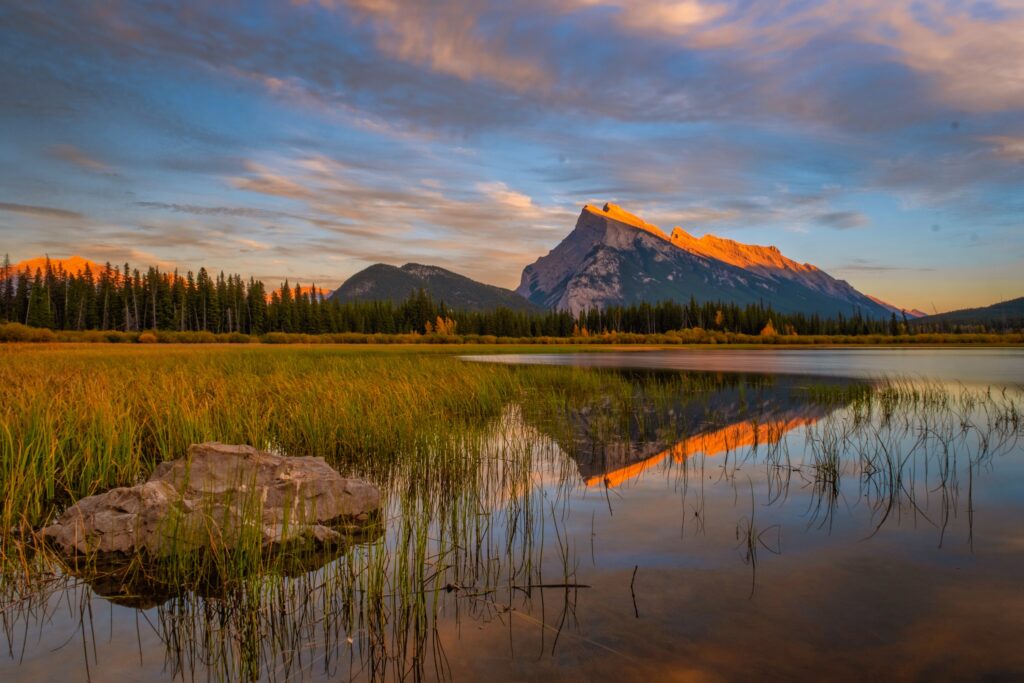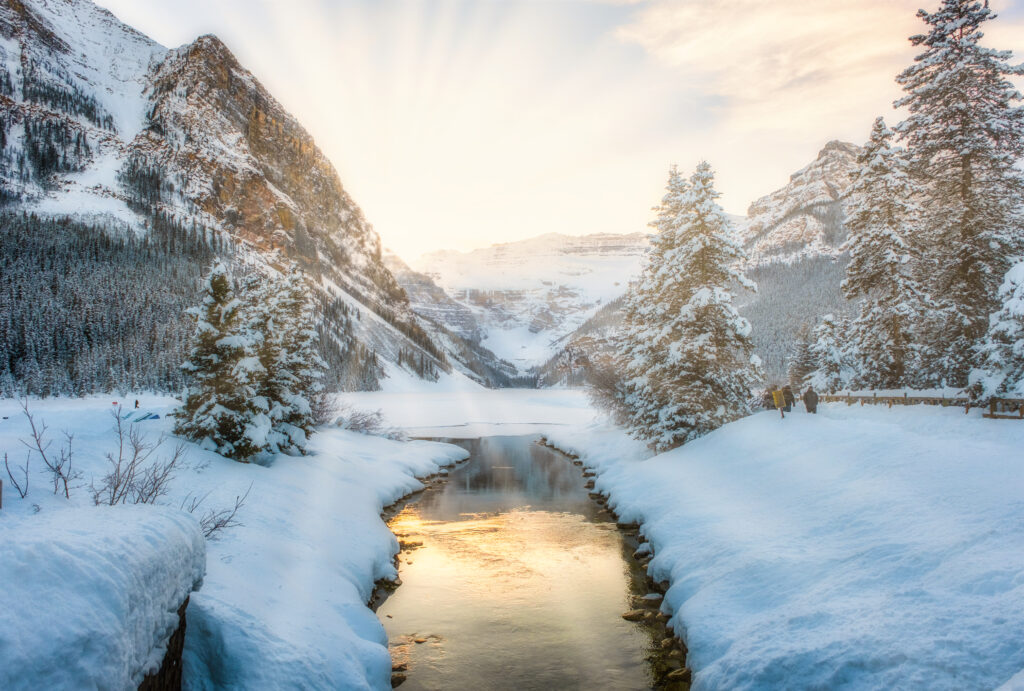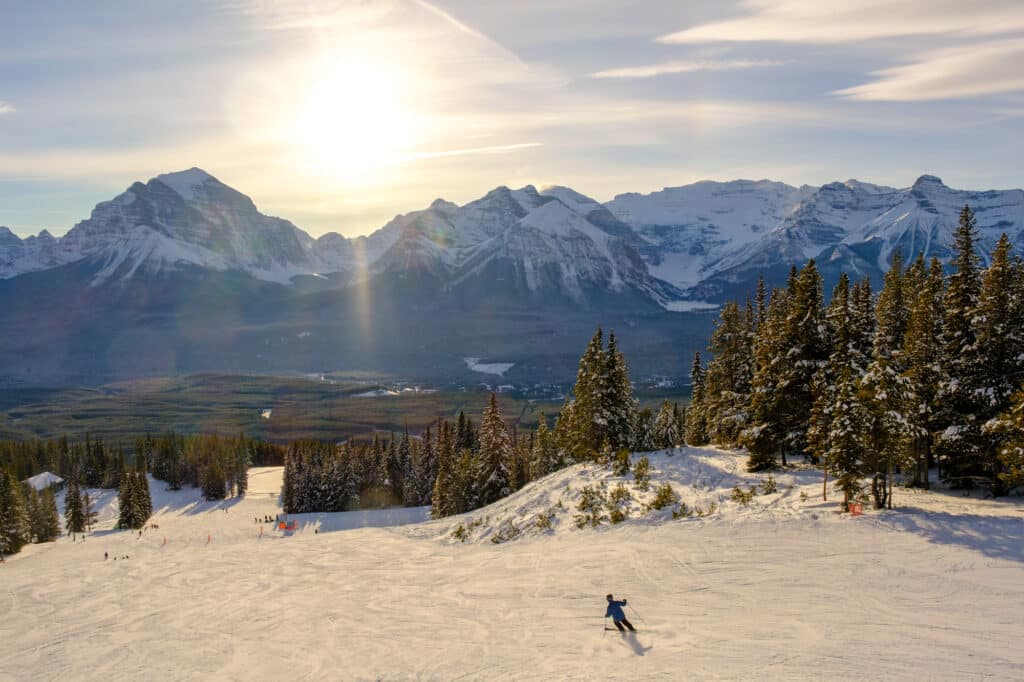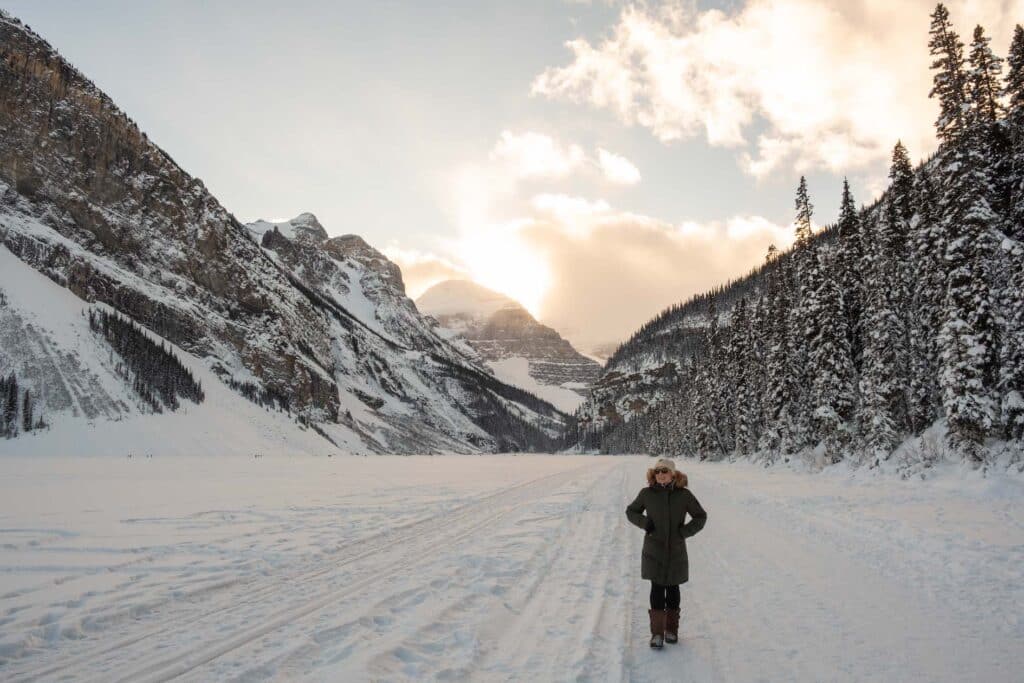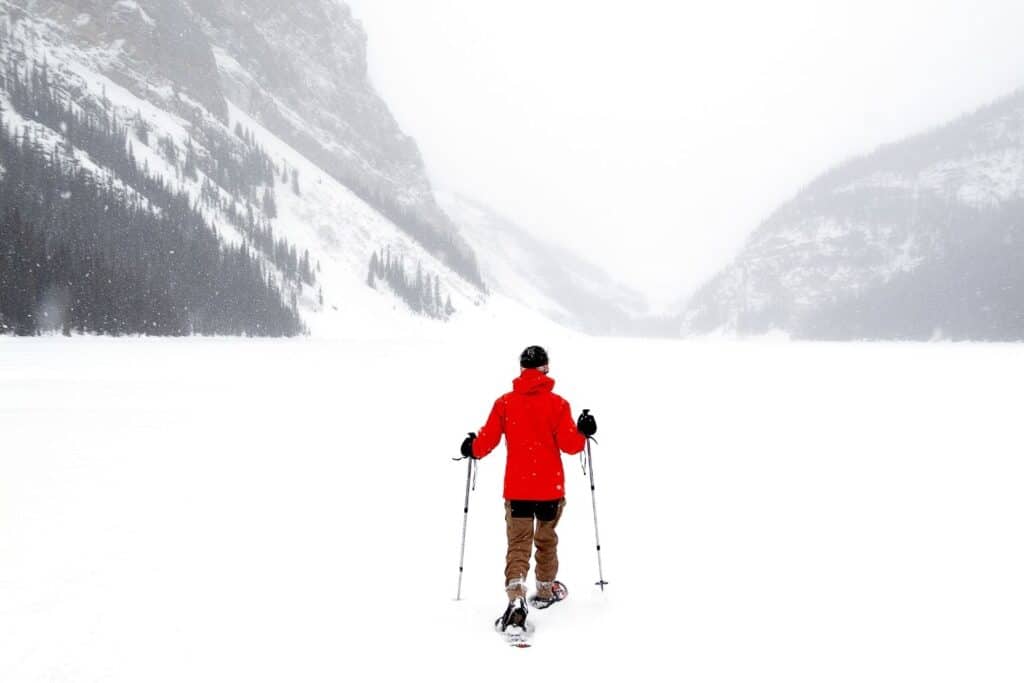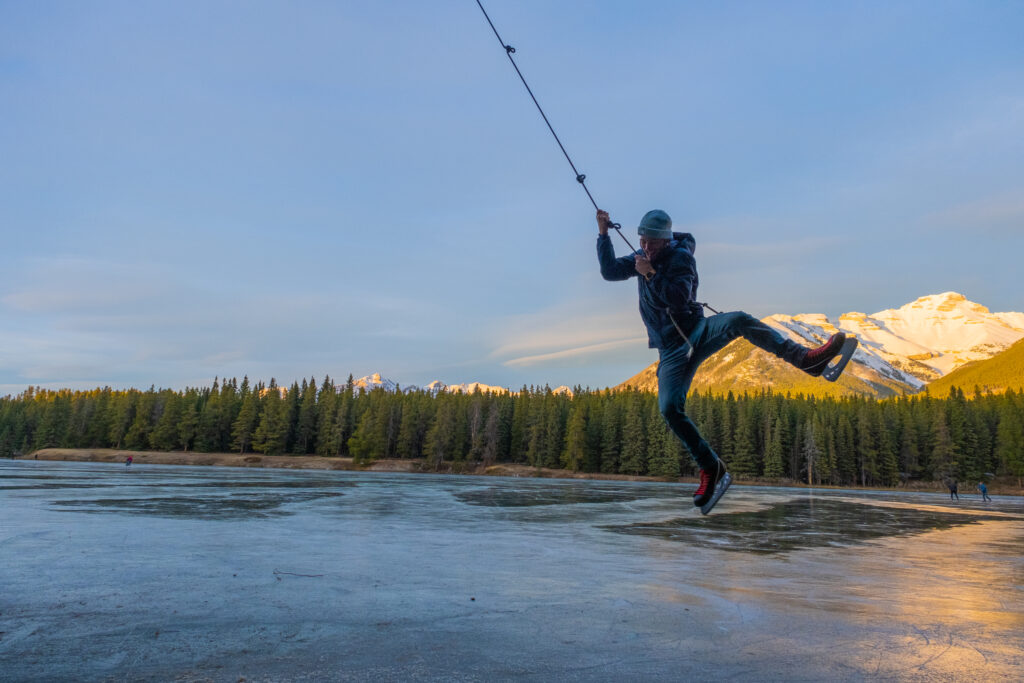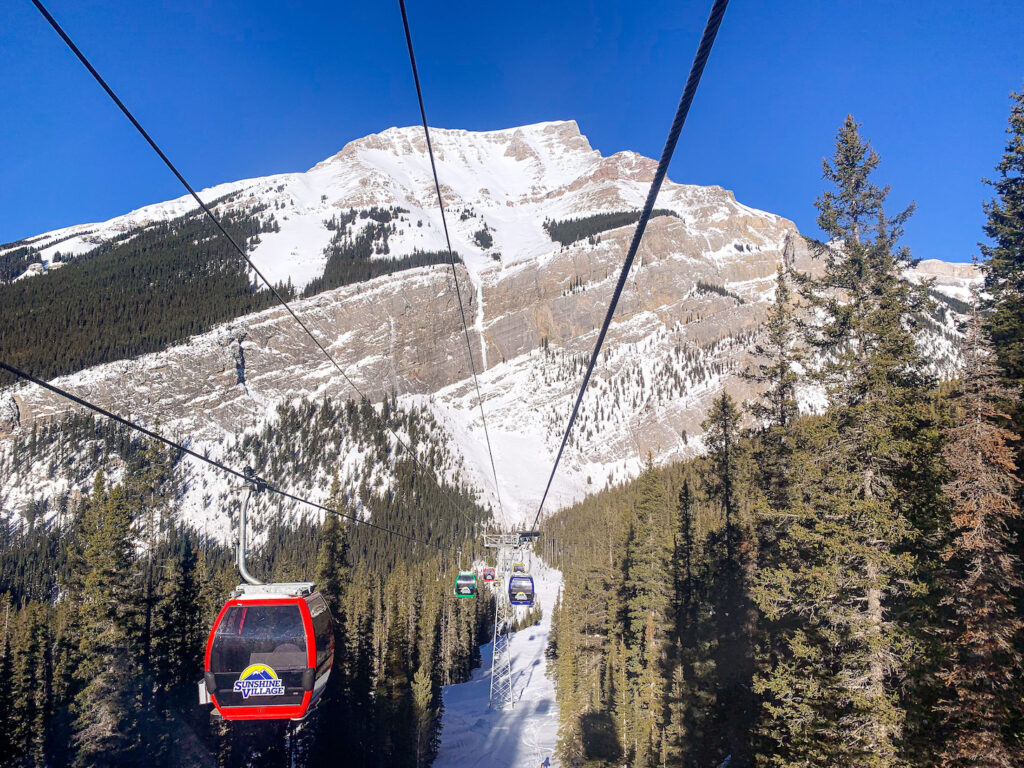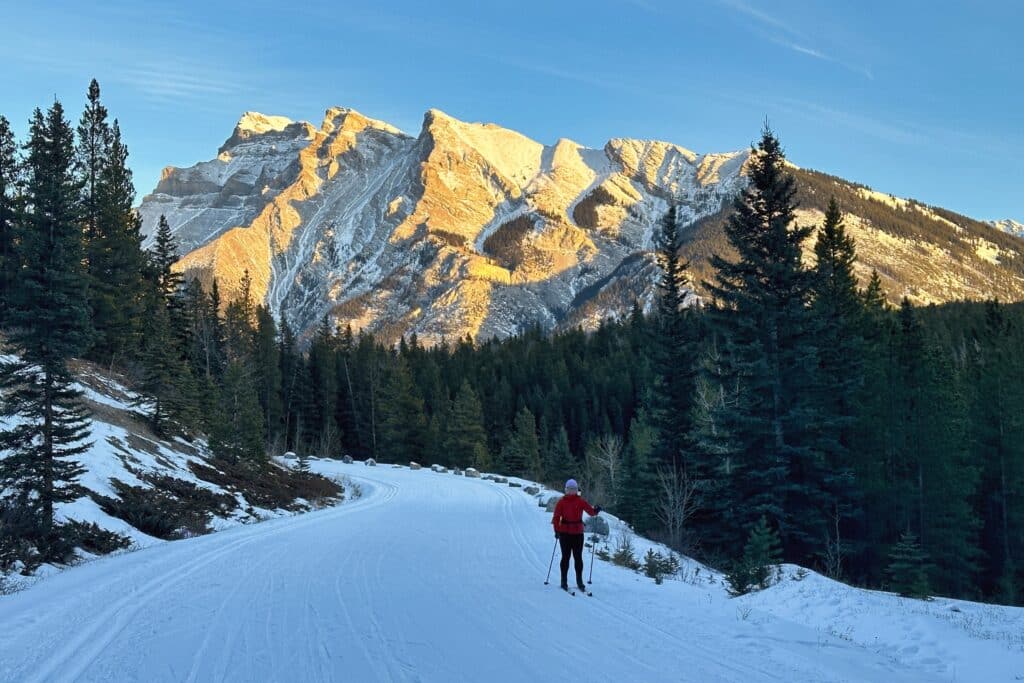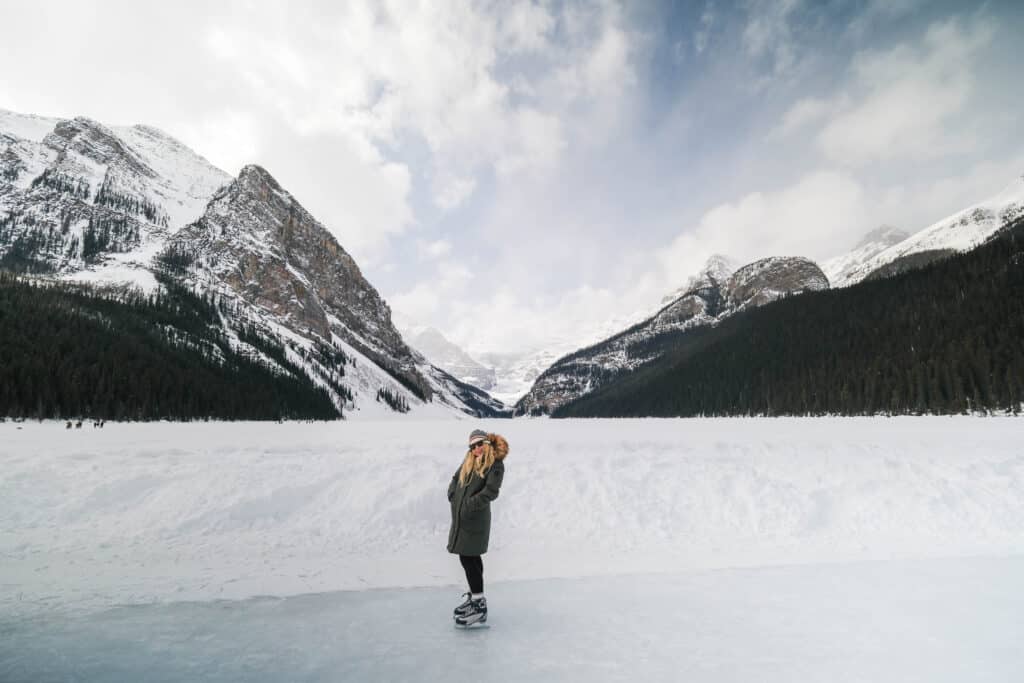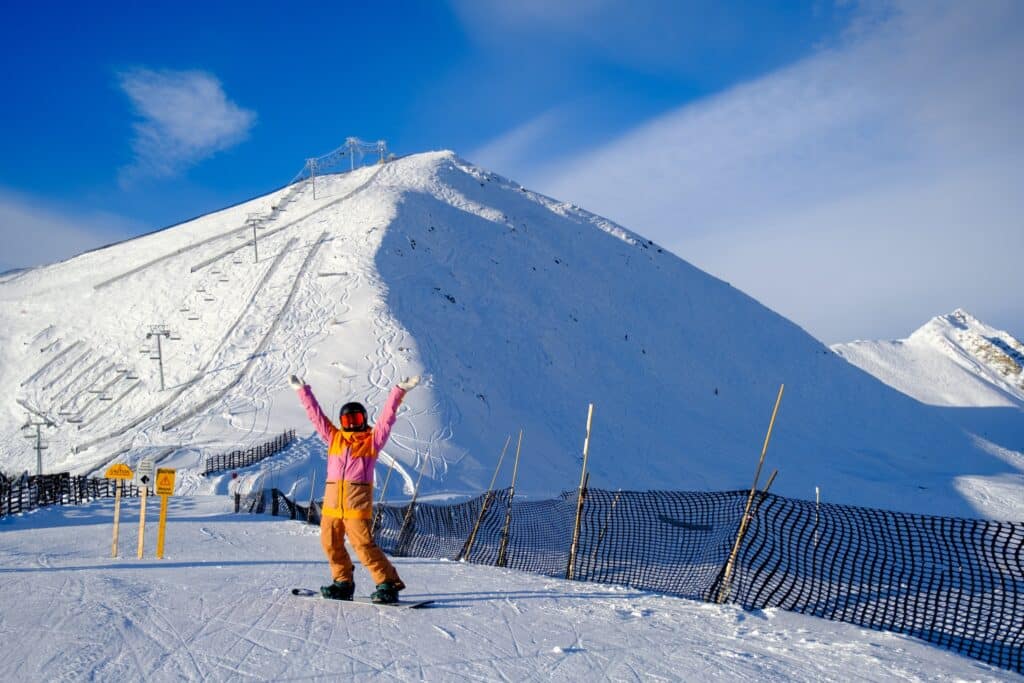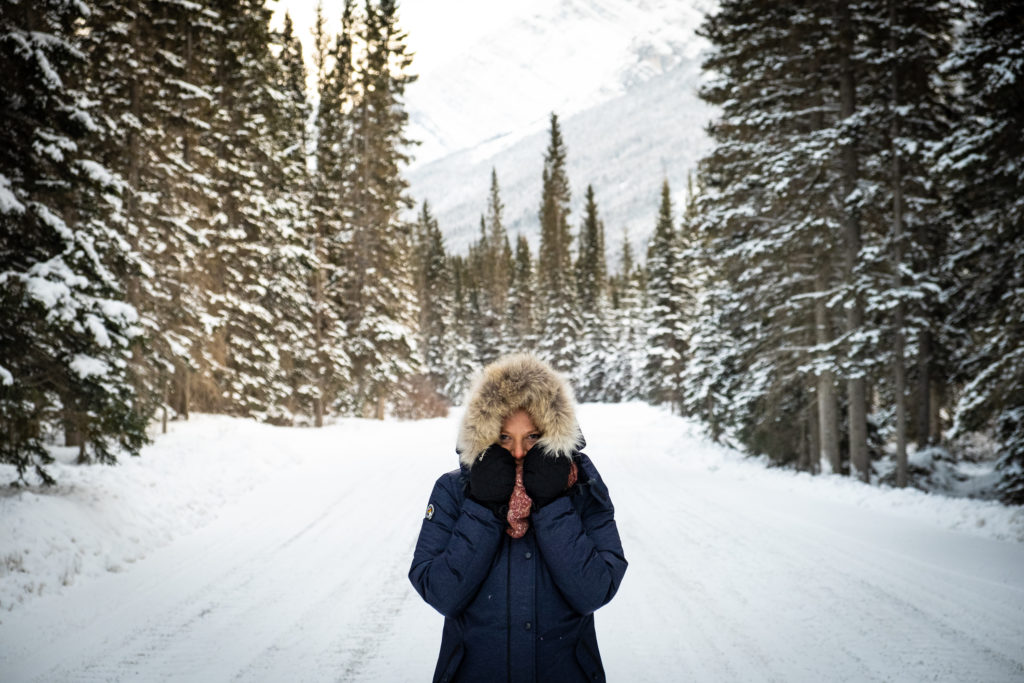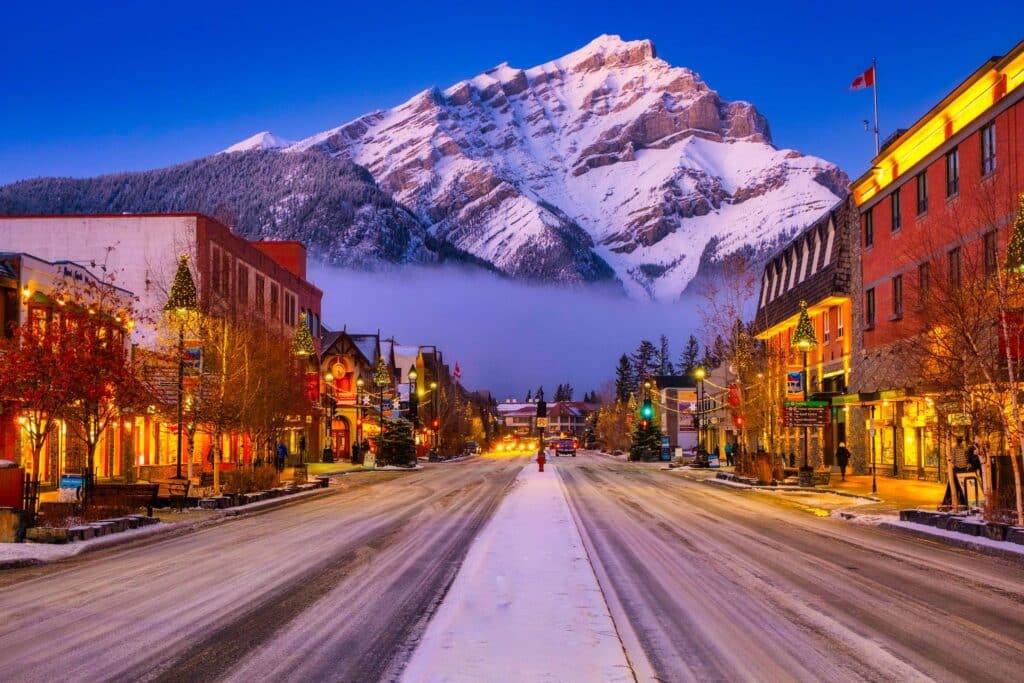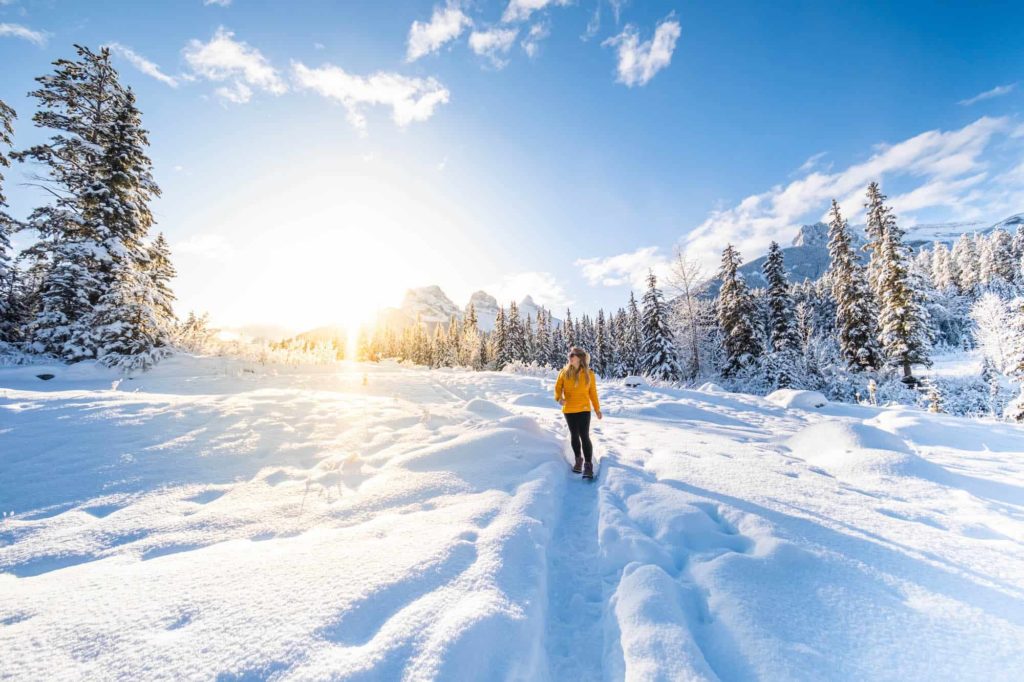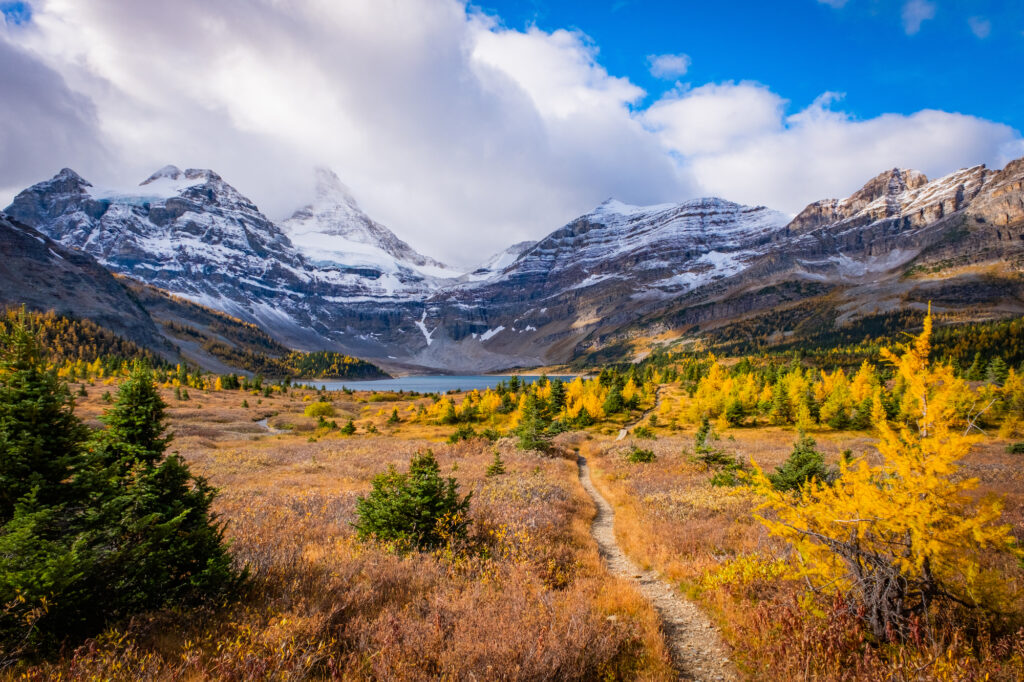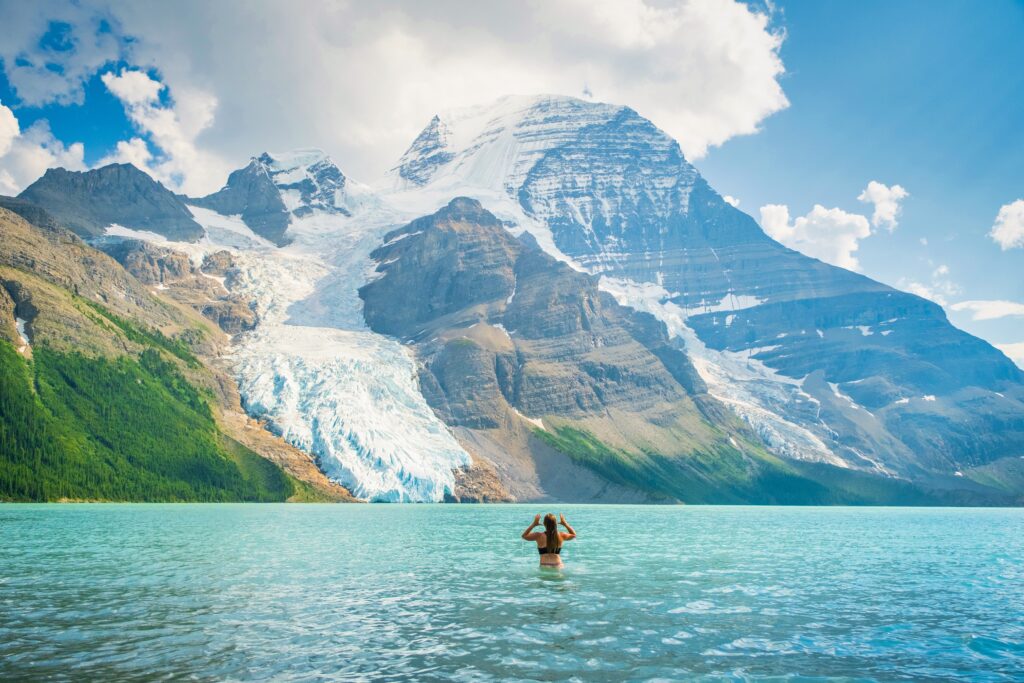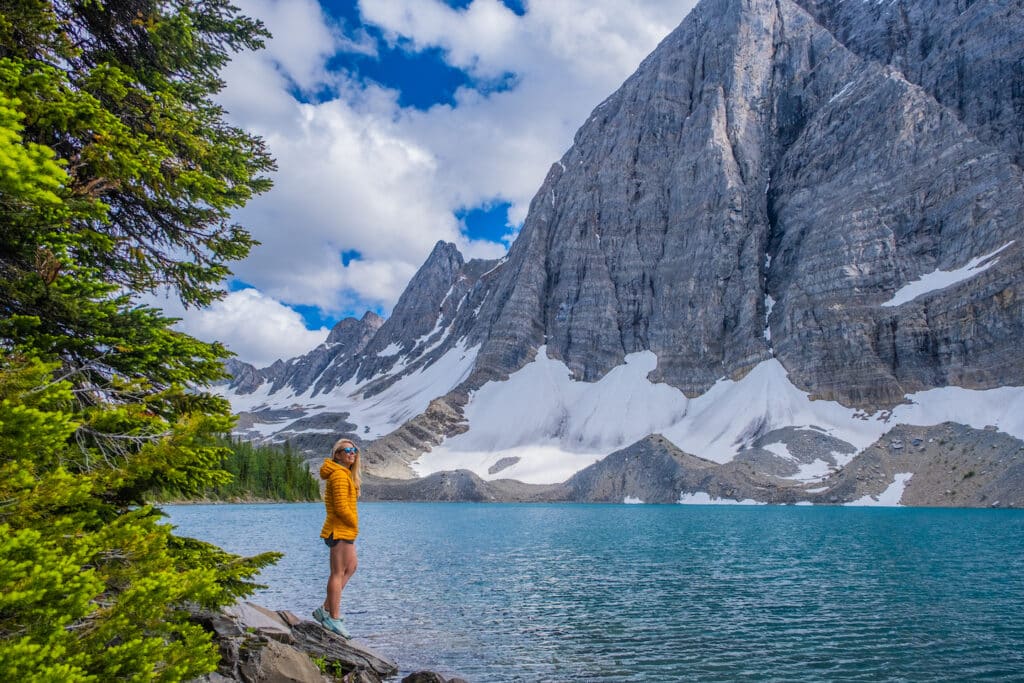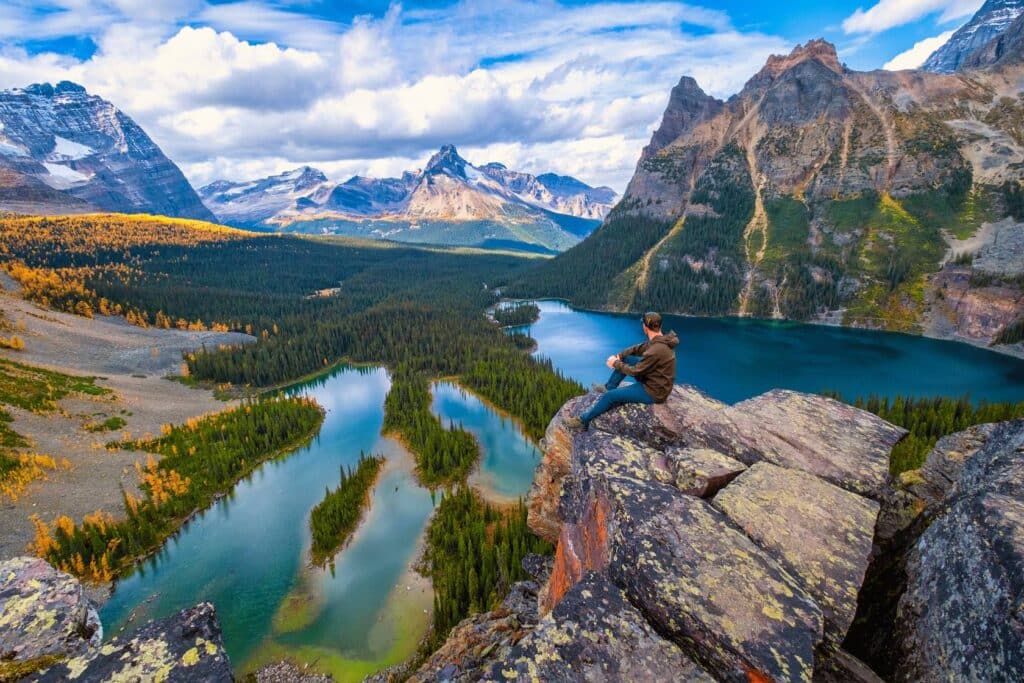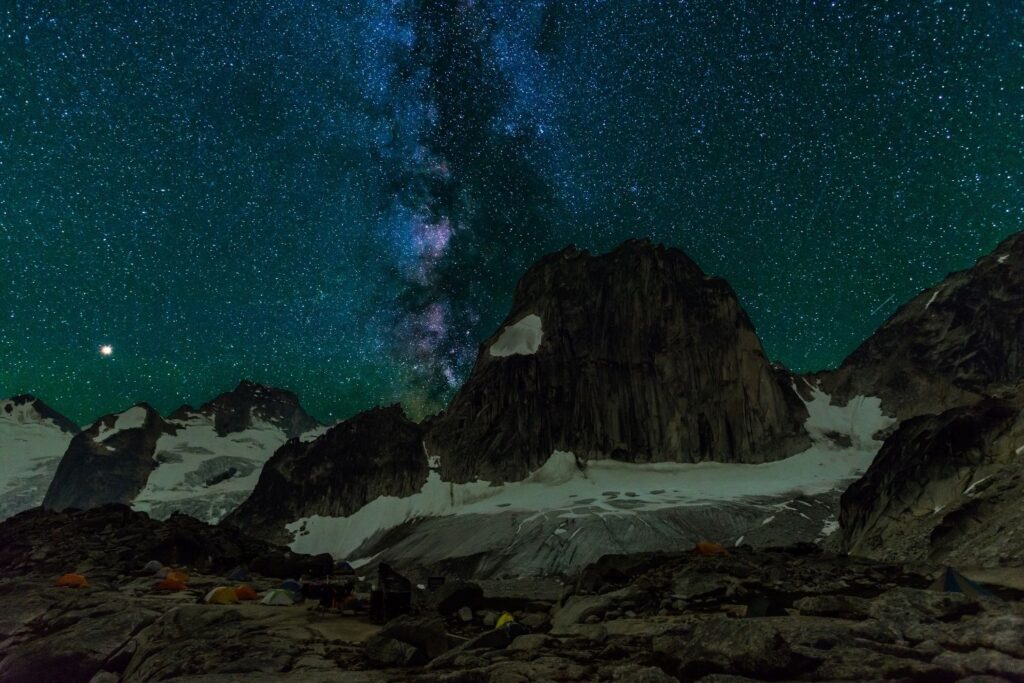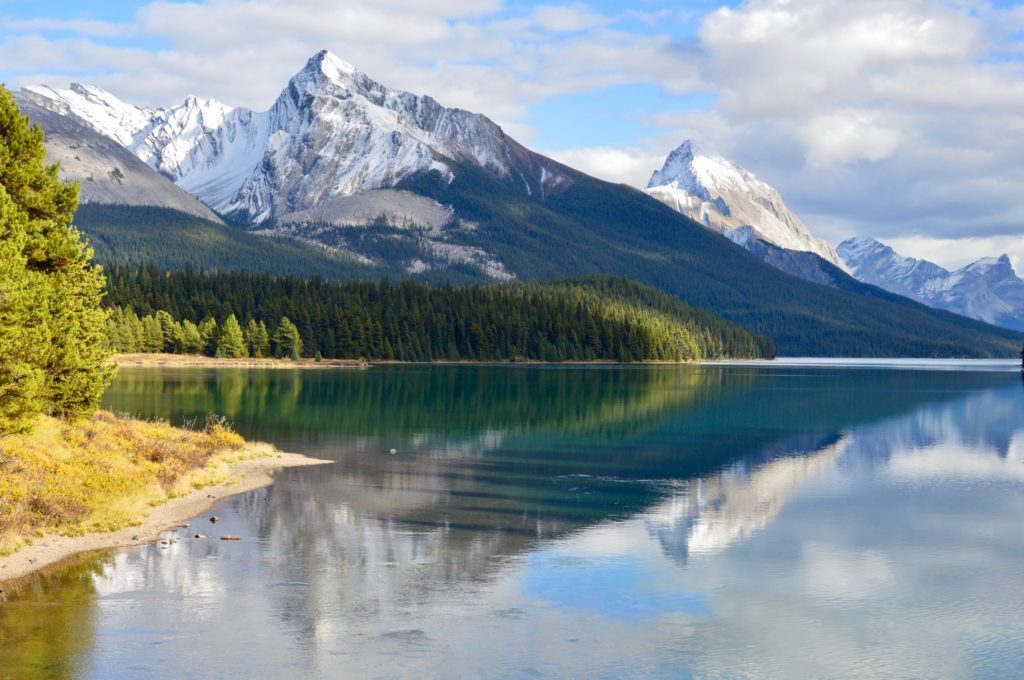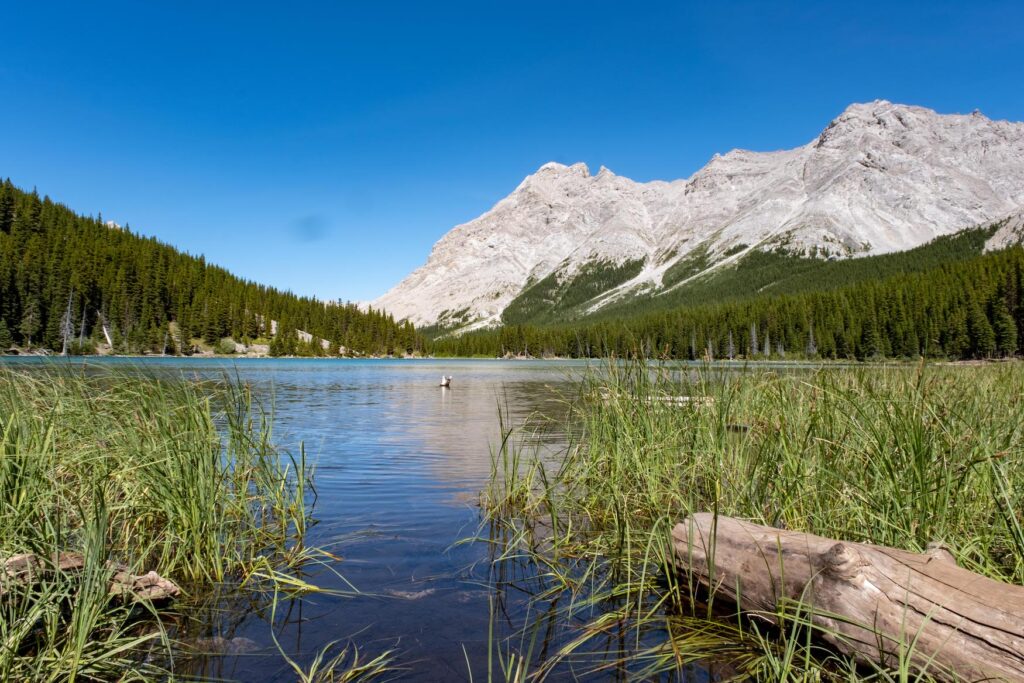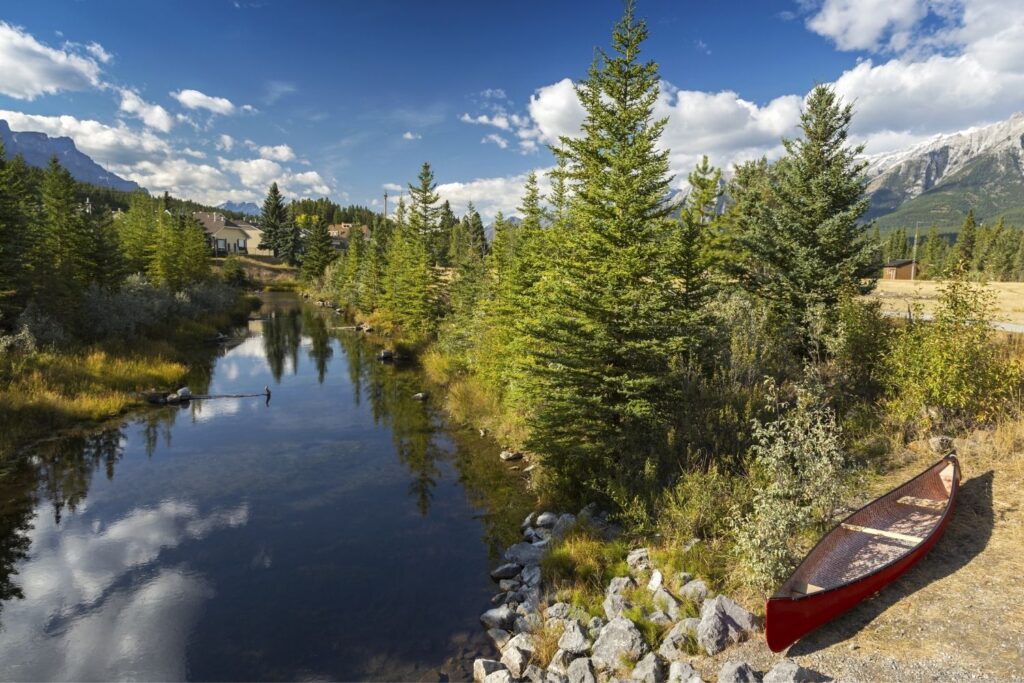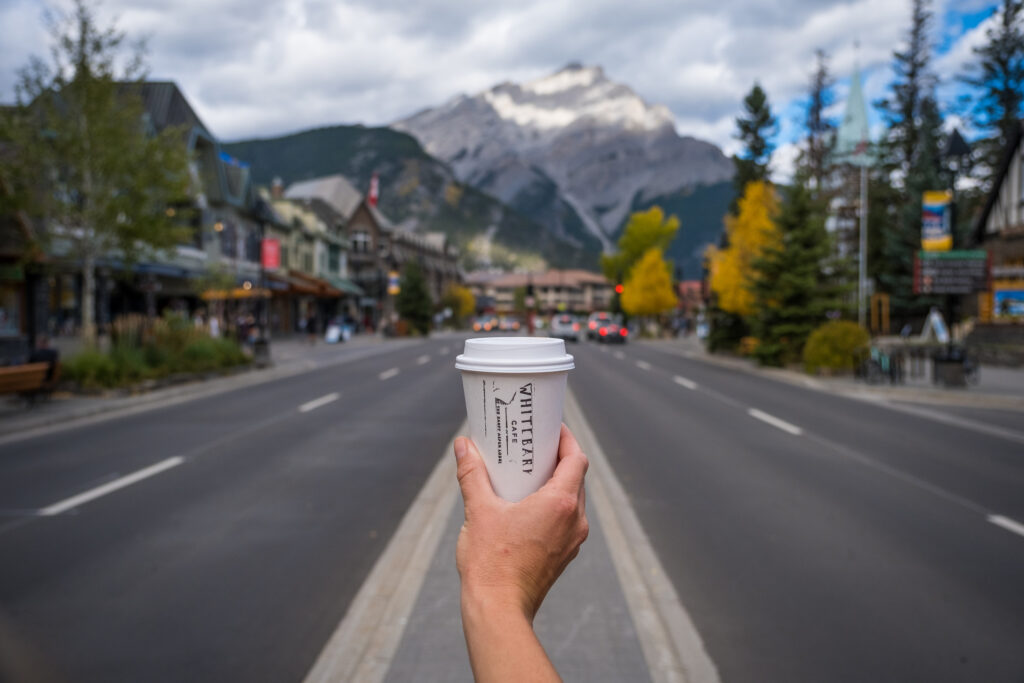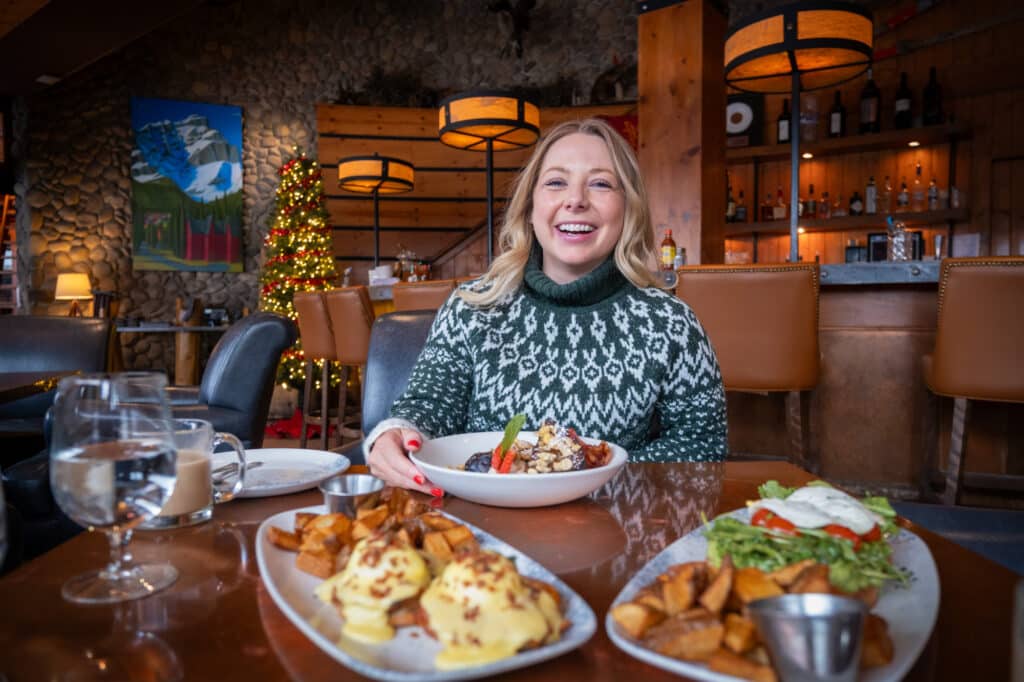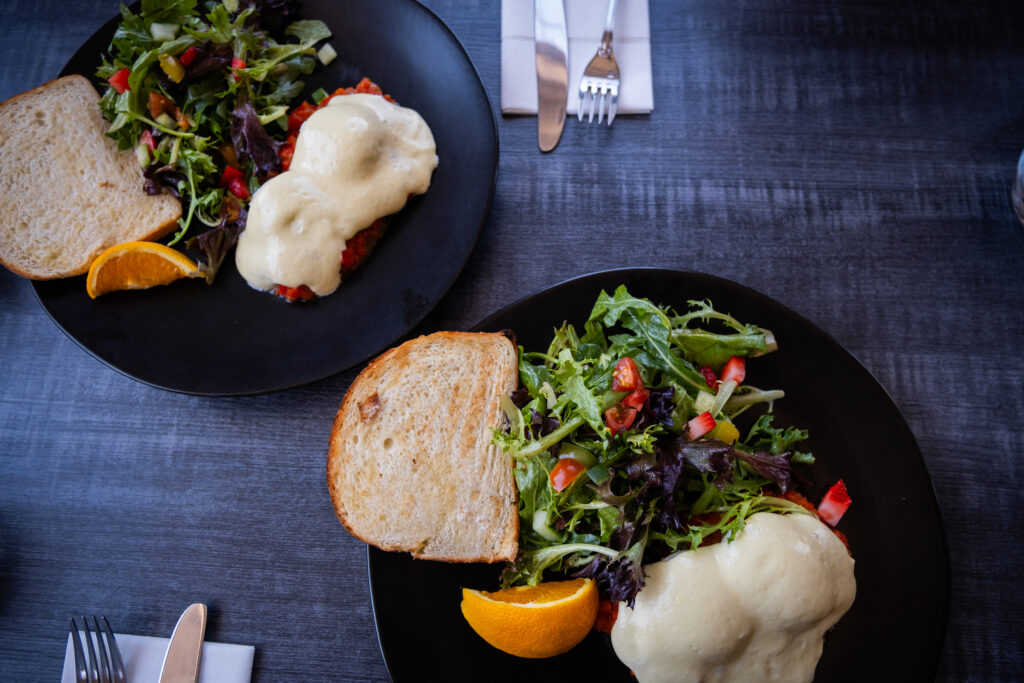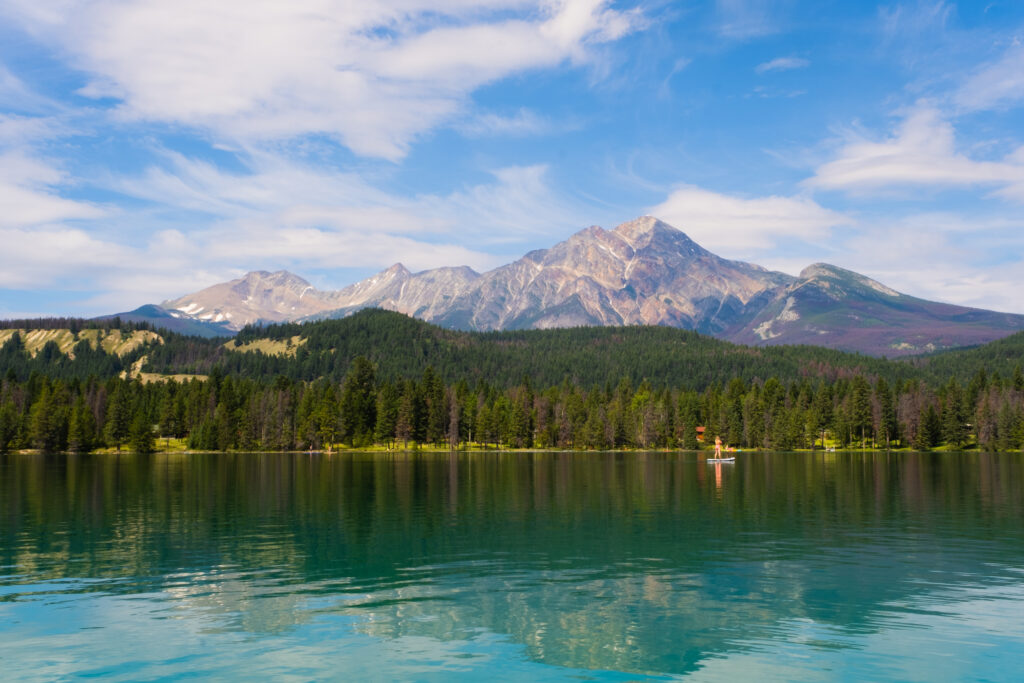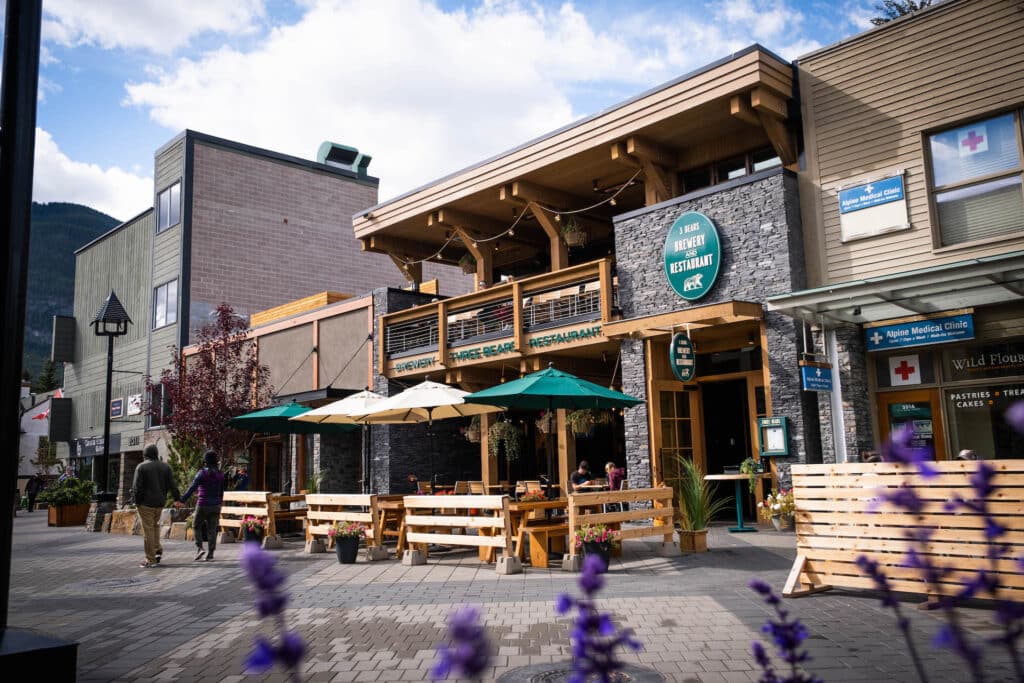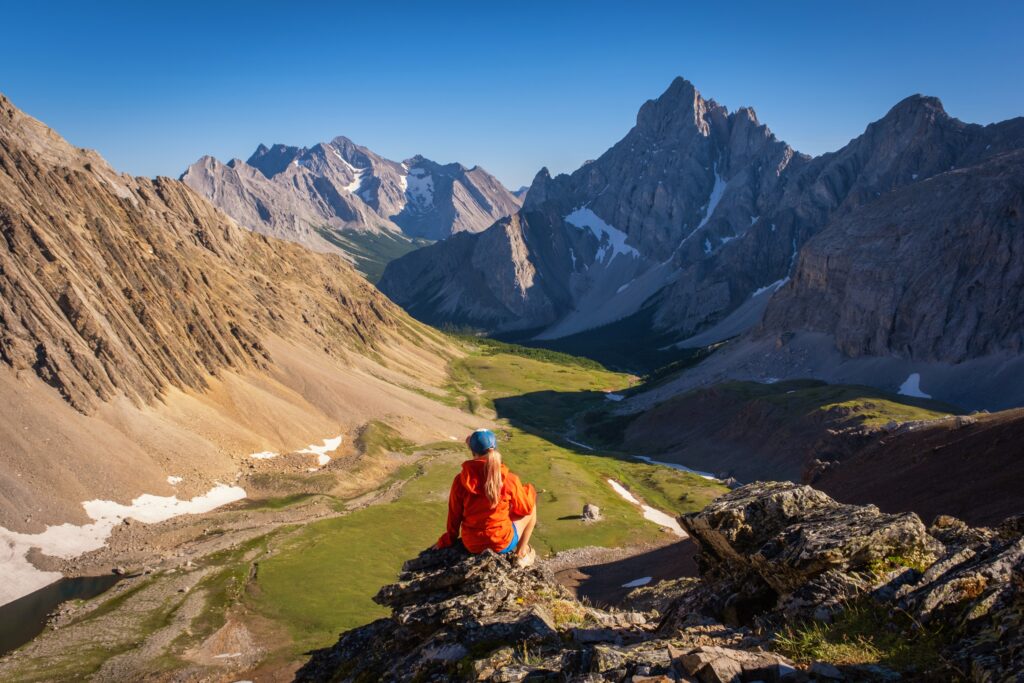Plan Your Trip to Banff
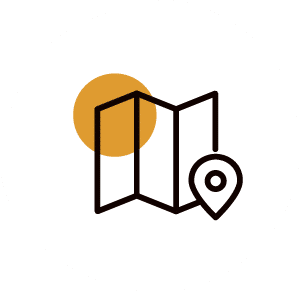
Planning A Trip To Banff
If you’re looking for help planning a trip to Banff or the Canadian Rockies, you’ve come to the right place. Natasha and I have been writing about travel for the last decade, and we were nomadic for five of those years, living out of a suitcase. In 2018, we felt we had enough of the nonstop nomadic lifestyle and decided to settle in one of the most beautiful places on earth: The Canadian Rockies.
Now, we have a home in Canmore and spend as much time exploring the surrounding mountains as possible. We believe this is one of the most beautiful regions in the world and a perfect place for an outdoor vacation. We aim to help you get the most out of your Banff trip and the surrounding areas.
(Psst – if you want us to plan the perfect trip just for YOU, or have further questions about mapping out your trip, we offer 1:1 Canadian Rockies travel consultations and itinerary planning!)
How To Get To Banff
The first step in planning a trip to Banff is determining how you’ll arrive. Calgary International Airport (YYC) is a great gateway to the Canadian Rockies. The airport is in close proximity to the Rockies and offers a wide range of direct flights across North America, Europe, and even Asia.
The drive from the city to the mountains starts in the prairies before crossing the rolling foothills and finally arriving in the Rocky Mountains. It’s an easy drive, though private shuttle options exist for those who prefer not to rent a car. Once you arrive in Banff, the valley has a surprisingly good public transport system if you choose to travel without a vehicle.
If you’re not coming from Calgary, here are other reference points:
Jasper
Banff is 288.3 km south of Jasper. The stunning Icefields Parkway connects the two towns and takes about 3.5 hours to drive, but most people take a full day due to all the amazing viewpoints and sights along the road.
Edmonton
Besides Calgary, Edmonton Airport is the other main airport that services Banff and Jasper. Flights here are more limited than in Calgary and can often be more expensive, but it’s popular for visitors to fly into Edmonton, drive through Jasper and down to Banff via the Icefields Parkway, and fly out of Calgary.
Vancouver
It’s very popular for many visitors to plan extended trips across B.C. and Alberta. Vancouver is an amazing city, and the province has some fantastic mountain towns to explore on the way to the Canadian Rockies.
While it’s the next province over, distances are far, and drive times are long. We suggest at least a few days to drive between the two to make it enjoyable — granted, we’ve driven it in a day before.
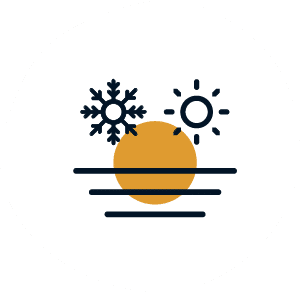
Pick The Right Season For You
Banff is wonderful all year round, but two high seasons offer the best conditions. Summer, between June and September, offers tremendous weather with the famous sparkling blue lakes. December to March offer reliable winter conditions and great ski conditions, and we think there are very few places better to spend Christmas than Banff!
Most will want to visit Banff in the summer, but it does bring the highest prices and largest crowds at popular sites. If you don’t mind cooler temps, September to early October can be a tremendous time to visit. Here is our month-by-month breakdown of the weather in Banff, accompanied by some photos of that month so you can get a picture of what it’s like to visit during that season.
Banff has two months, May and October, which we consider the shoulder season. Visitors can enjoy slightly discounted prices and fewer crowds, but mixed weather at times. April and November are the least ideal months to visit Banff, but they can still make for an enjoyable holiday as they are very quiet times in the park. For example, with the right conditions, November is a tremendous time to go wild ice-skating on Banff’s famed lakes and April can bring some amazing ski conditions.
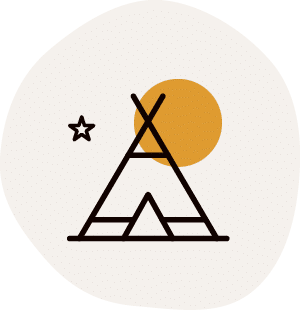
Tips To Visit Banff On A Budget
Banff is far from the cheapest place to visit, but it’s also not as expensive as say…Switzerland. A trip to Banff can honestly be as cheap or expensive as you want it to be. If you’re camping and cooking all your meals, you can have an awesome trip for around $100 a day. However, most hoping to stay in a hotel in the summer and enjoy a few meals out will find costs fairly high.
Visitors in the shoulder months can enjoy cheaper rates, but it does come at the sacrifice of ideal conditions. The good news is that the Canadian dollar is lower than the USD, GBP, or EUR, so travelers from those countries will enjoy the exchange rate. Sorry, Canucks!
The best ways to keep your budget down are to plan your trip to Banff outside the high season months, travel in a group, book self-catering options, camp or stay in hostels, and enjoy free outdoor activities. Granted, some tourist attractions, such as the Banff Gondola and Maligne Lake Cruise, are well worth paying for!
Activities in Banff
When planning a trip to Banff, there is by no means a shortage of activities, and there is so much to explore. Anyone who has spent time here knows it would take a lifetime to explore all the Canadian Rockies offer—this does not include all the things we would willingly do again and again. Of course, what you do and can do largely depends on the season and weather. See our list of best things to do in Banff, and continue reading for more details between winter and summer.

Summer Activities
It’s tough to think of a more spectacular place than Banff during peak summer. A wide swath of hiking trails provides visitors with expansive glaciated icefields, forested valleys, towering peaks, sparkling emerald lakes, and close encounters with wildlife. The towns of Banff, Canmore, Lake Louise, Field, and Jasper sit within the Canadian Rockies and serve as amazing bases that will astound visitors with mountain views.
If you’re keen to hike or want to see the lakes, you have a narrow summer window as the lakes and peaks are locked away in snow and ice for most of the year. The peak summer months also see waves of tourists, and when most of Banff’s four million visitors plan a trip to Banff.
Hiking In Banff
There is no better way to enjoy nature than on foot. Once the summer rolls around, the snow melts, and the trails dry out, it’s time to explore gorgeous nature. There is nothing more quintessential to a Banff trip than a hike in the mountains!
Specific Hike Guides
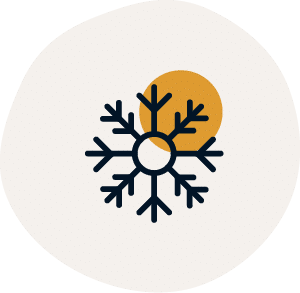
Winter In Banff
Winter sees a fraction of the visitors during the summer, but it is an amazing time for a trip to Banff. You won’t be able to see the famed turquoise blue lakes, but instead, the park and town turn into a winter wonderland. If there is a winter activity you love, the region has it in abundance. You’re spoilt for choice when planning a trip to Banff in the winter!
Visitors can enjoy skiing, snowboarding, ice skating, sleigh riding, cross-country skiing, snowshoeing, snowmobiling, dog sledding, tobogganing, tubing, backcountry skiing, ice-climbing, and heli-skiing. Over the years, we’ve been spoiled by the ski in Western Canada and think it’s one of the best places in the world for ski (especially if you love tree skiing!). Winter favors the active, but it’s tough to resist the charm of a cozy fireplace and some fondue on a snowy winter night.
Winter Activities

Where to Stay in Banff?
Make sure to book accommodation in advance when planning a trip to Banff! Hotels often have no vacancies in the summer months. For some great help, check out our round-up of the best hotels in Banff. These are our favorite hotels and will ensure you have a great time during your trip. If you’re seeking a more specific place to stay, check out the hotels, Airbnbs, hostels, and cabins below.

Camping in Banff
Camping in Banff National Park is a splendid and affordable way to explore the Canadian Rockies. The campgrounds throughout the park offer access to some of the best trails and endless natural beauty.
All campgrounds are managed by Parks Canada or the provinces of Alberta and British Columbia in the neighboring provincial parks. There are no private campgrounds inside the parks. In addition to the wonderful front-country campgrounds, there are some world-renowned multiday hikes in the backcountry around the Canadian Rockies.
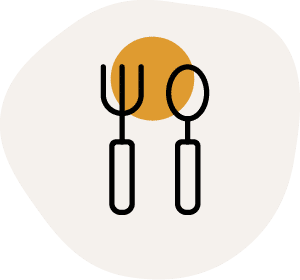
Where to Eat in Banff?
While most mountain towns might struggle to supply visitors with a wide selection of restaurants, that is certainly not the case in Banff. Some of the best restaurants in Western Canada are located here, and visitors are spoilt for choice.
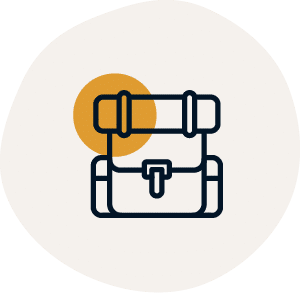
What To Pack for the Canadian Rockies?
You can come to Banff National Park in whatever you want, but remember this is an outdoor destination, and it’s best to be prepared for the wilderness. I’m not saying you need to know how to start a fire from scratch, survive in the woods for three days, and spear your own fish, but things like a hat, gloves, and jacket will come in handy—even in the summer.
Yes, it’s Canada, and yes, it gets freezing here. Even in the middle of August, we may wear down jackets at night and on hikes. You can find my full Banff packing list here. Leave the high heels and fancy dresses at home. There is nowhere to wear them unless you’re attending a wedding or event!
In general, some items you need for a trip to Banff National Park are:
Some Helpful Posts:
Take Memories Leave Only Footprints
We know we don’t have to say this, as many of you respect nature, but just a gentle reminder that the Canadian Rockies are a special place. Please keep the mountains as clean or cleaner than you found them, and leave the wildlife alone!
I’ve seen a huge difference in the summer months with trash and disrespect in the park. In major hot spots like Lake Minnewanka and Two Jack Lake, bear safe garbage bins are everywhere, but trash is left out carelessly. Make sure to use the bins and don’t leave garbage behind. This includes orange peels, banana peels, and apple cores, too – do not just throw them on the ground. They take forever to decompose and can attract animals, resulting in human/wildlife conflicts.
If there is no trash can, carry everything with you until you can access one. If you have a pet, pick up after it, and don’t put the poop in a plastic bag and leave the plastic bag on the trail to “pick up later,” seriously, I see this on almost every hike, and it’s pretty infuriating. Don’t throw coins into lakes or natural bodies of water, nature is not a wishing well. Please don’t pick wildflowers in the park to make a bouquet for your home later. Please leave everything just as you’ve found it.
And yes, please don’t harass any wildlife. If you’re lucky enough to see a bear, elk, mountain goat, or moose while visiting Banff, slow down briefly, snap a photo, and move on. And never get out of your car for selfies or chase a bear with your car. This is called a “bear jam,” which happens a lot more than you would think here. It’s not only harmful to you, but it habituates and disturbs the animals.
Need help planning your trip?
Let us craft the perfect trip to the Canadian Rockies. We know all the ins and outs to the Canadian Rockies and can save you a ton of time and money with our insider tips. We’ll customize an itinerary to your liking and help you have an incredible trip.

